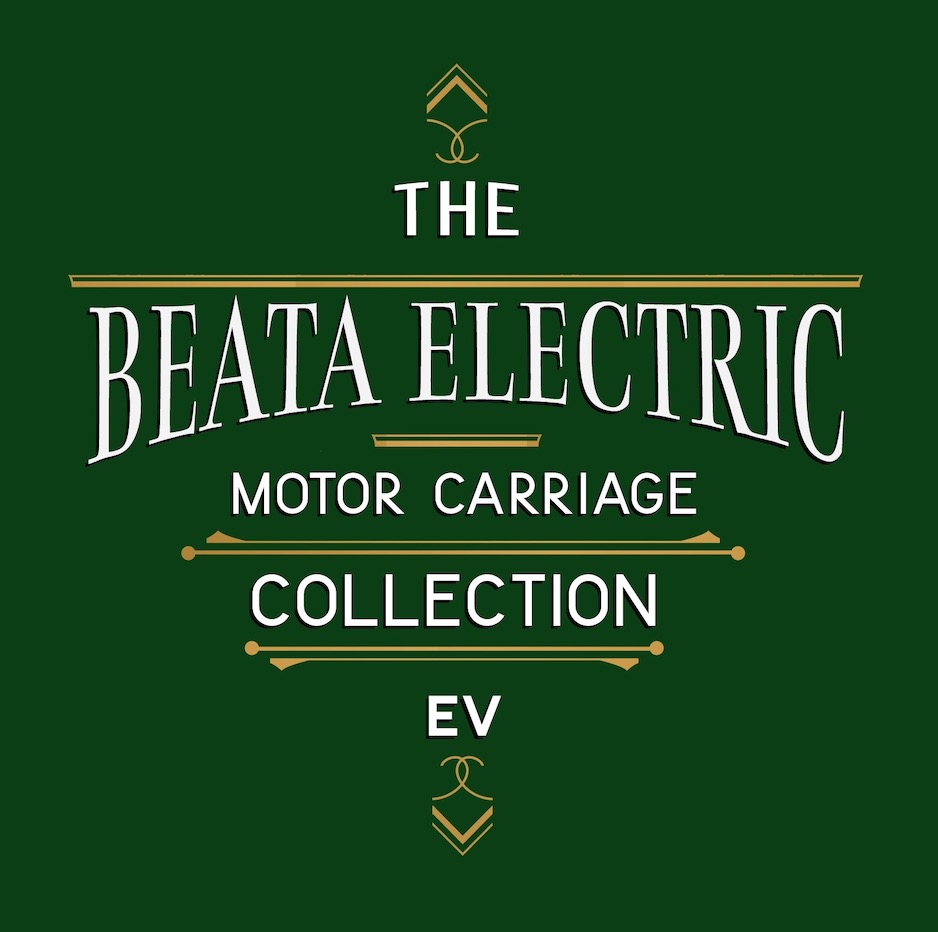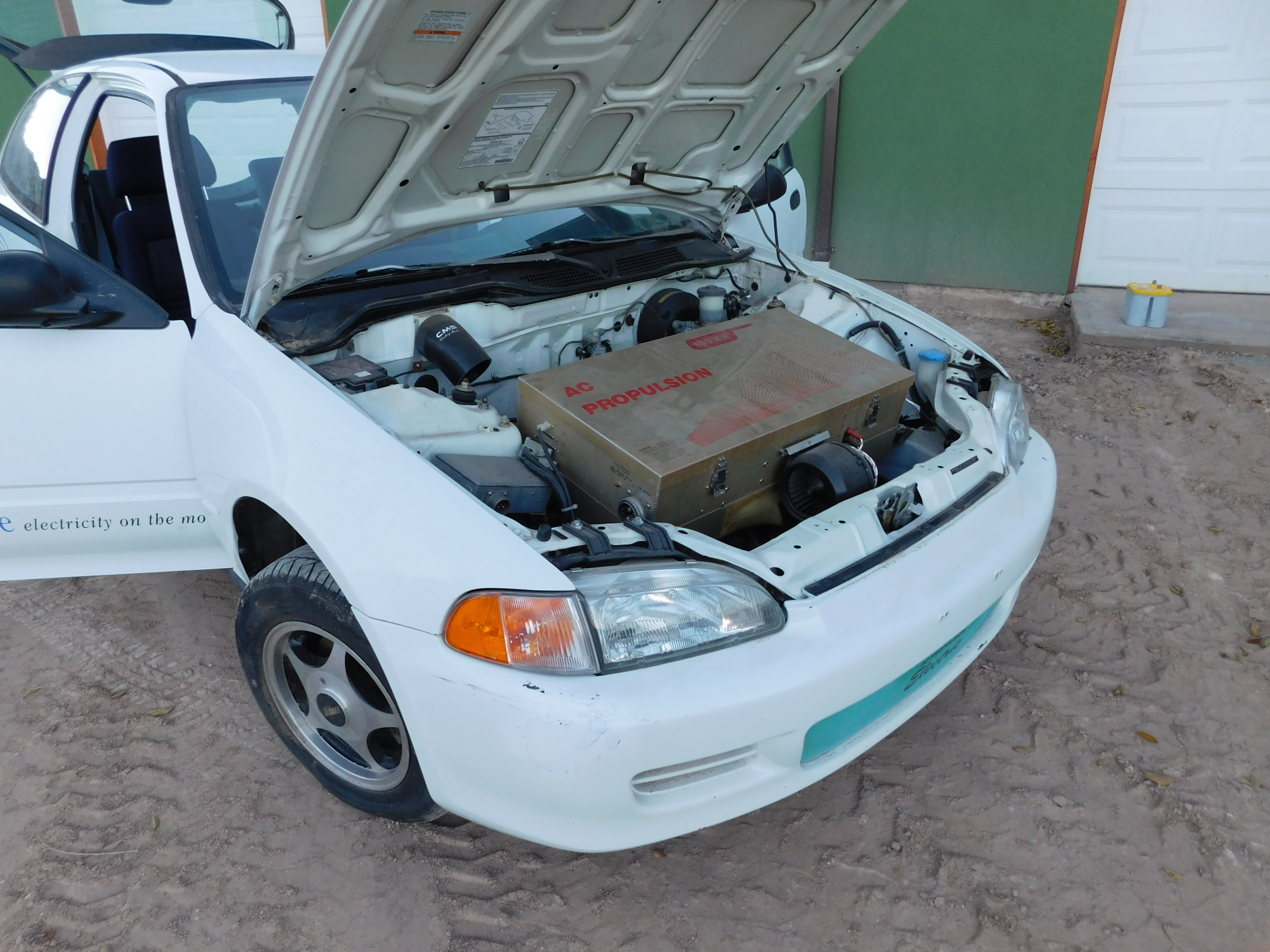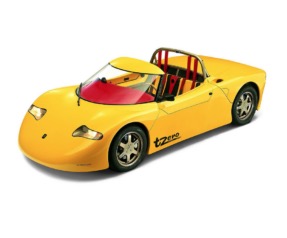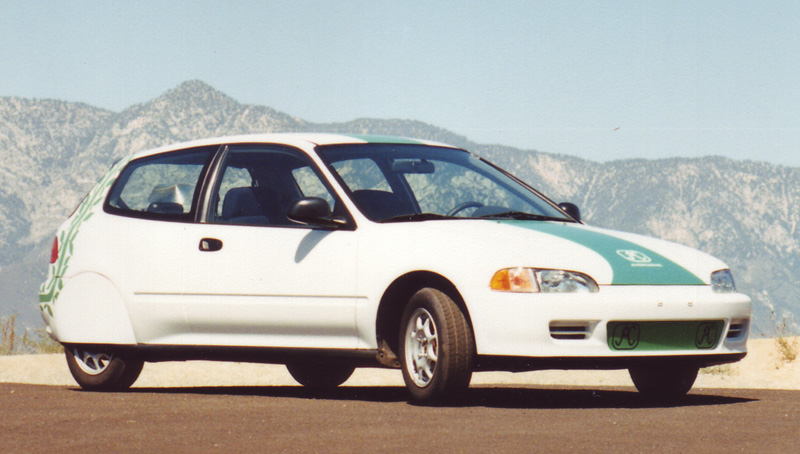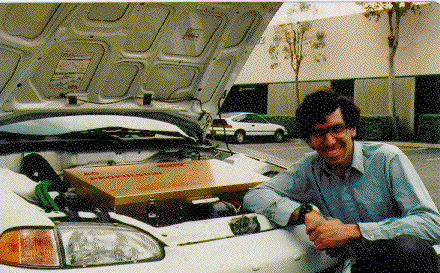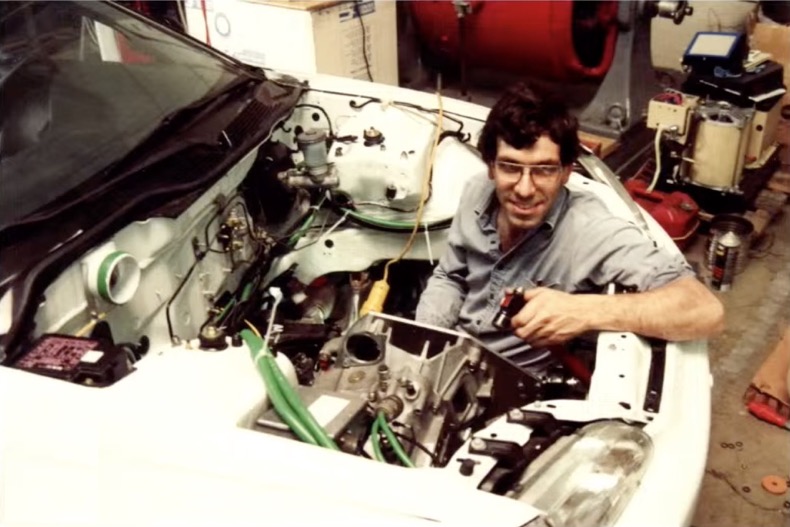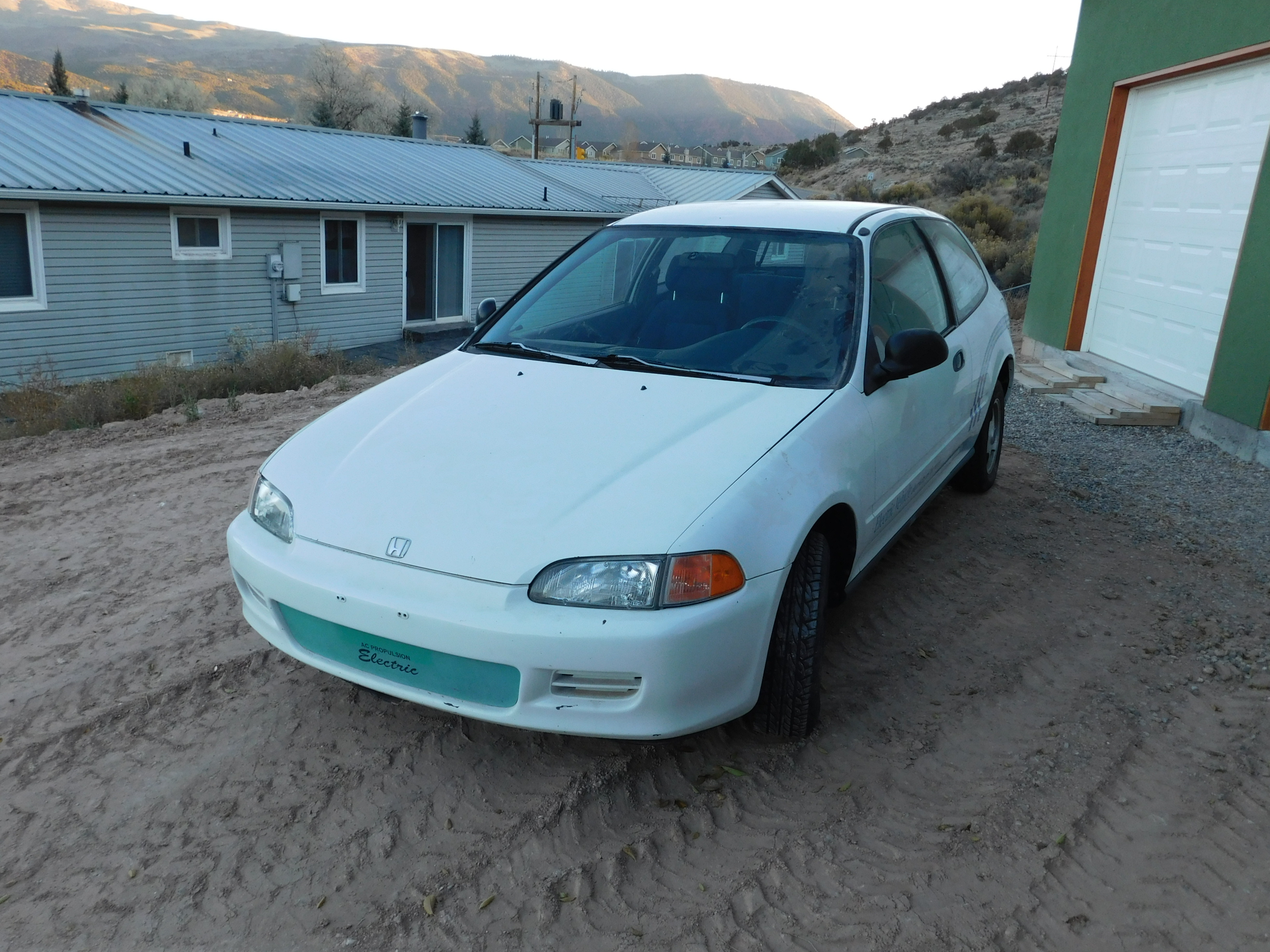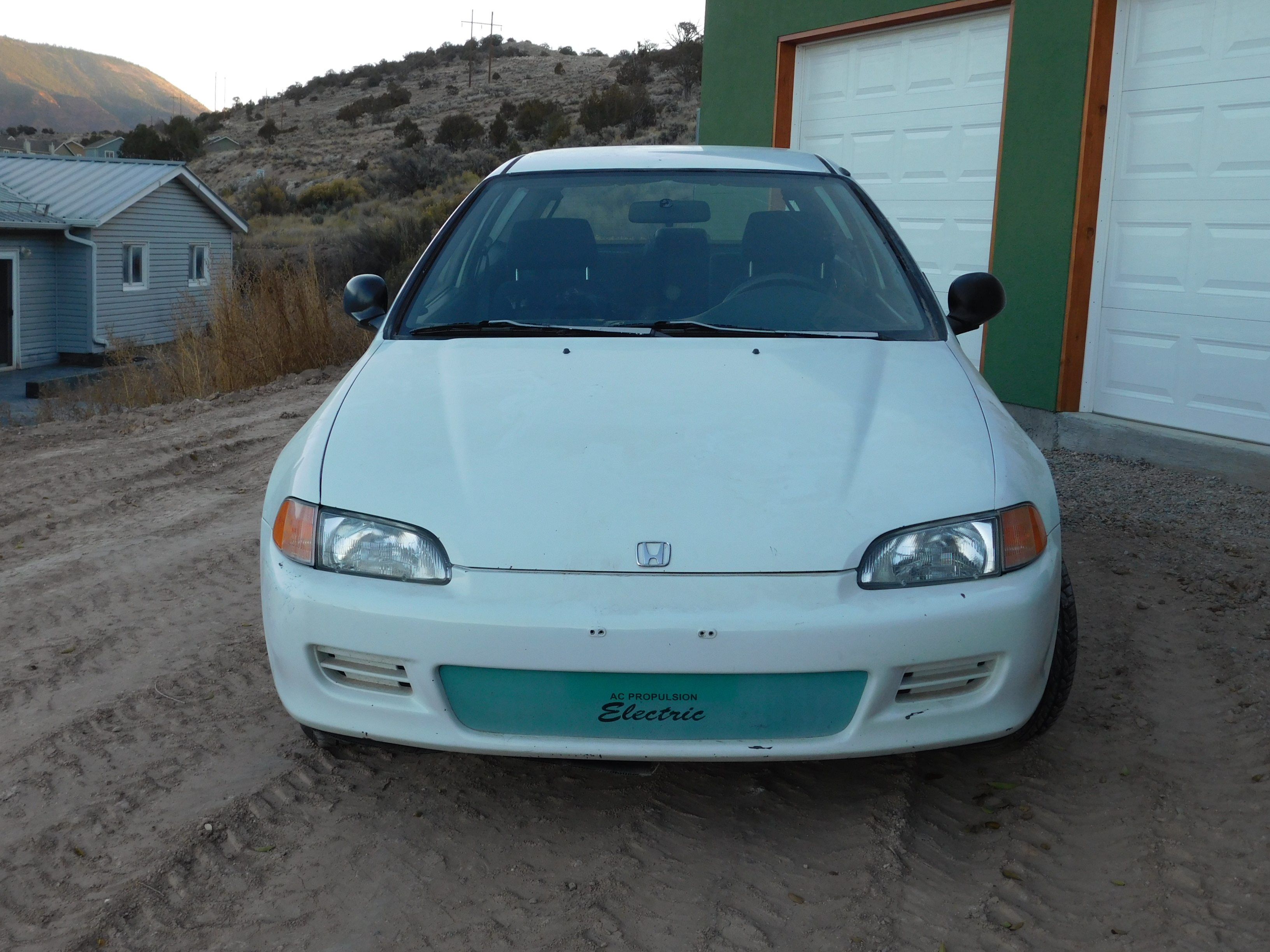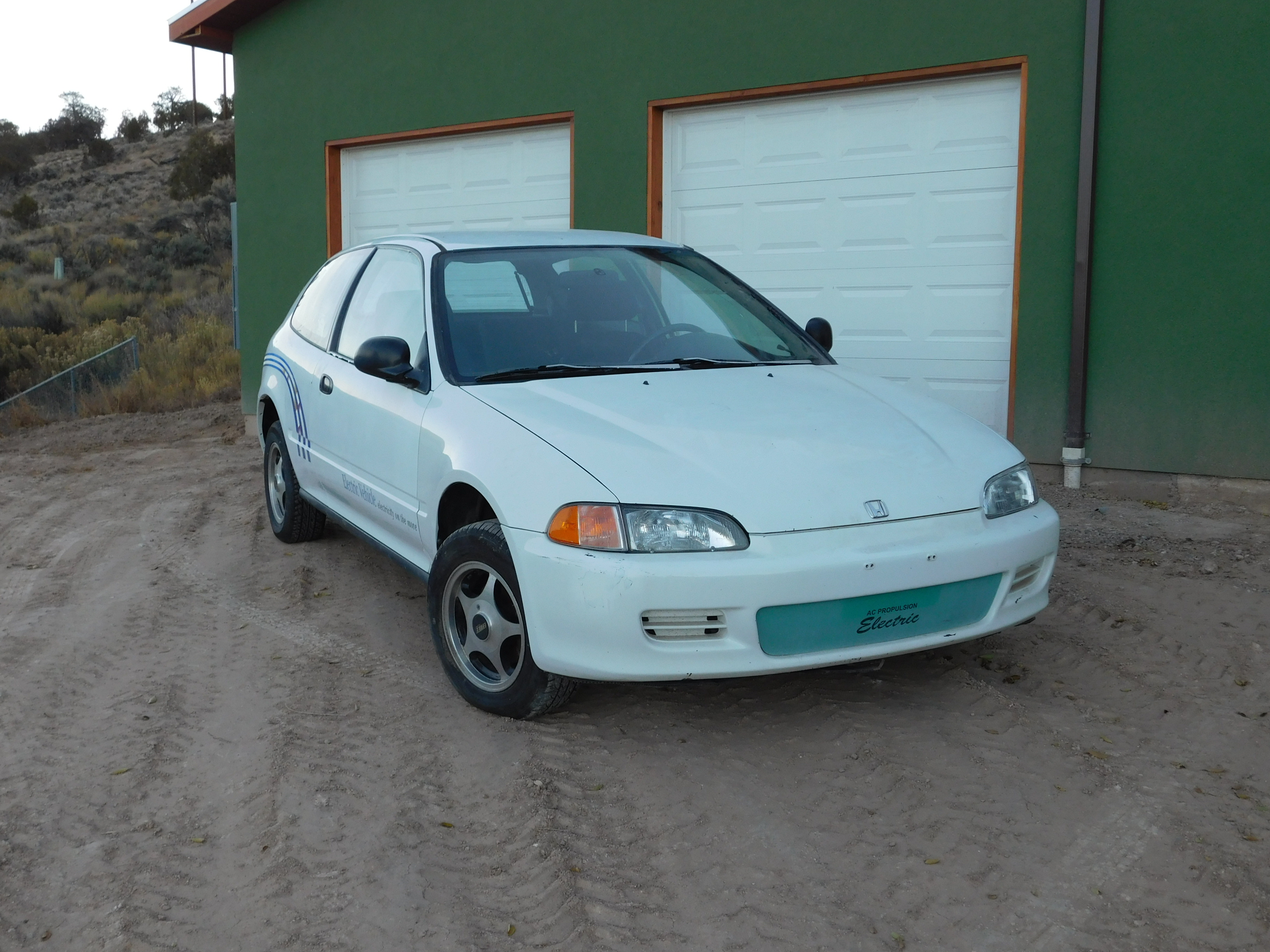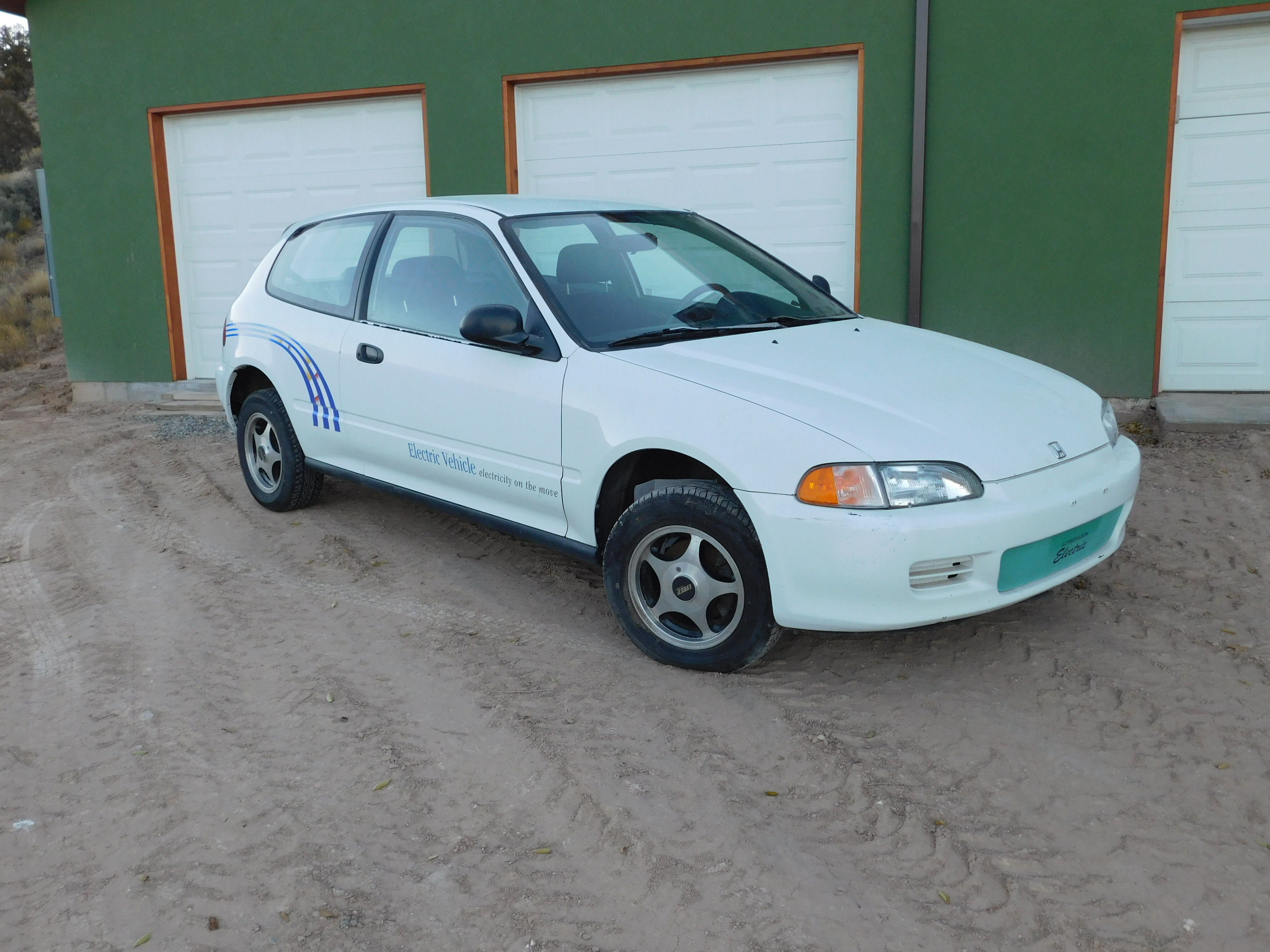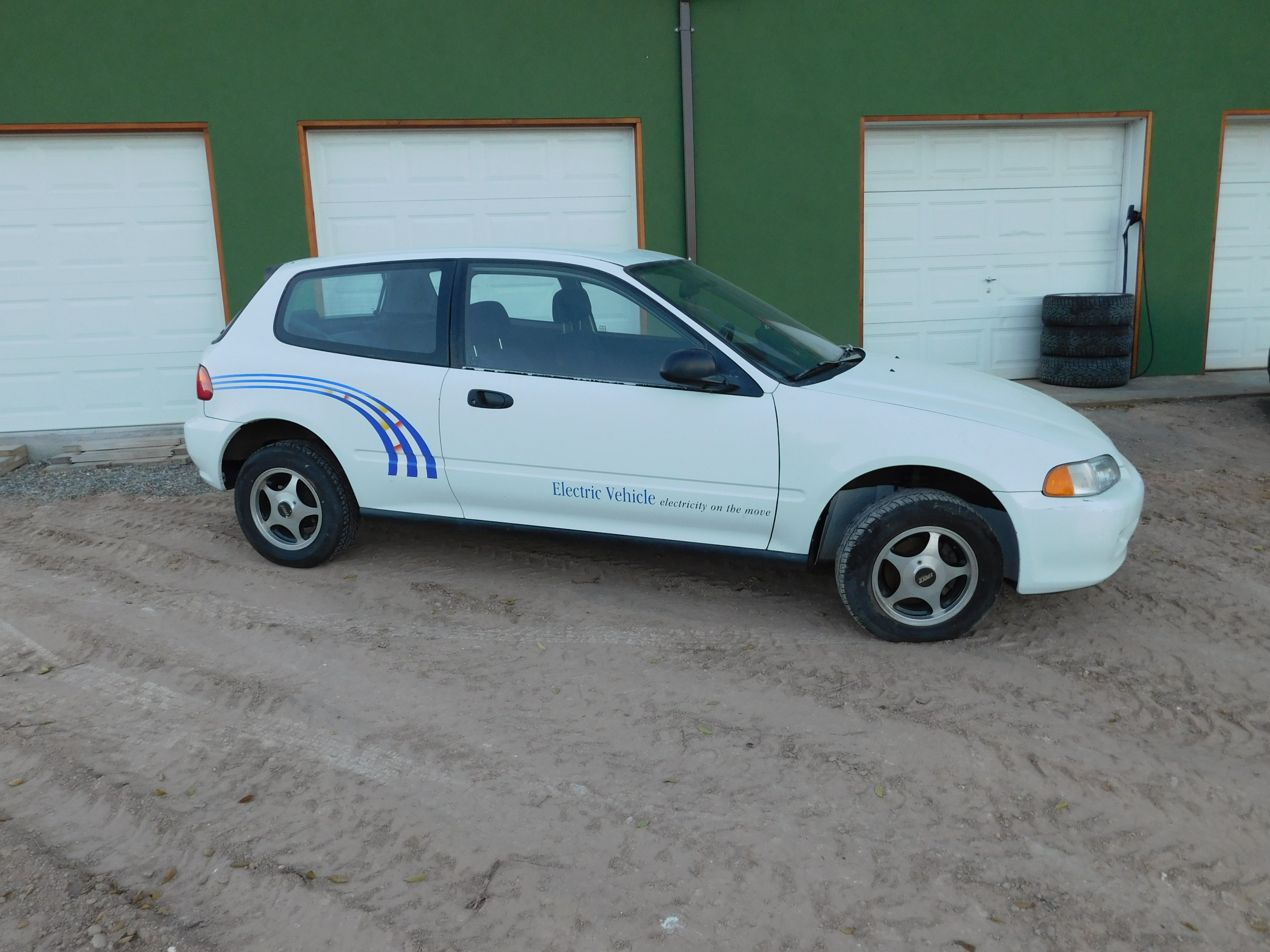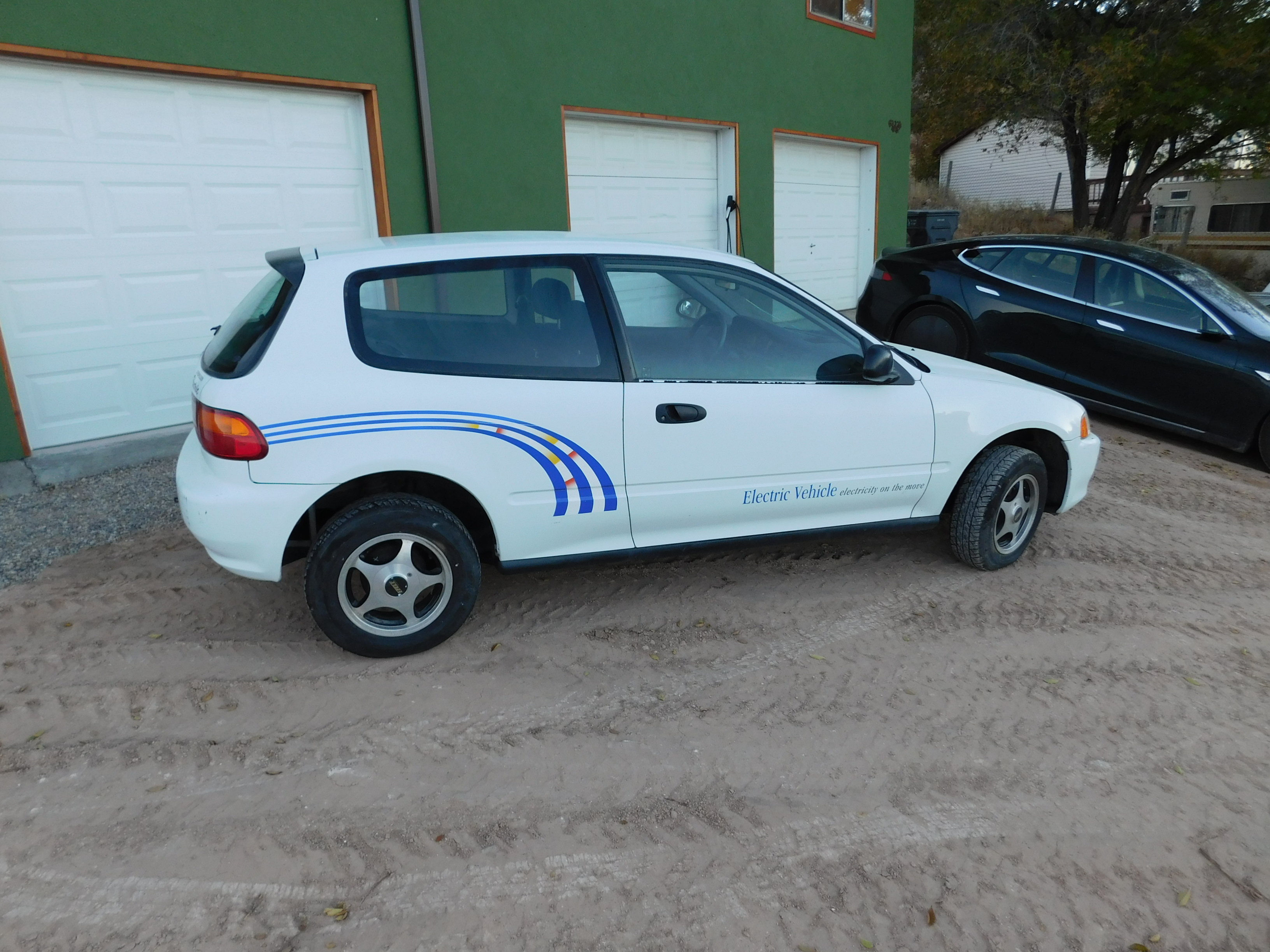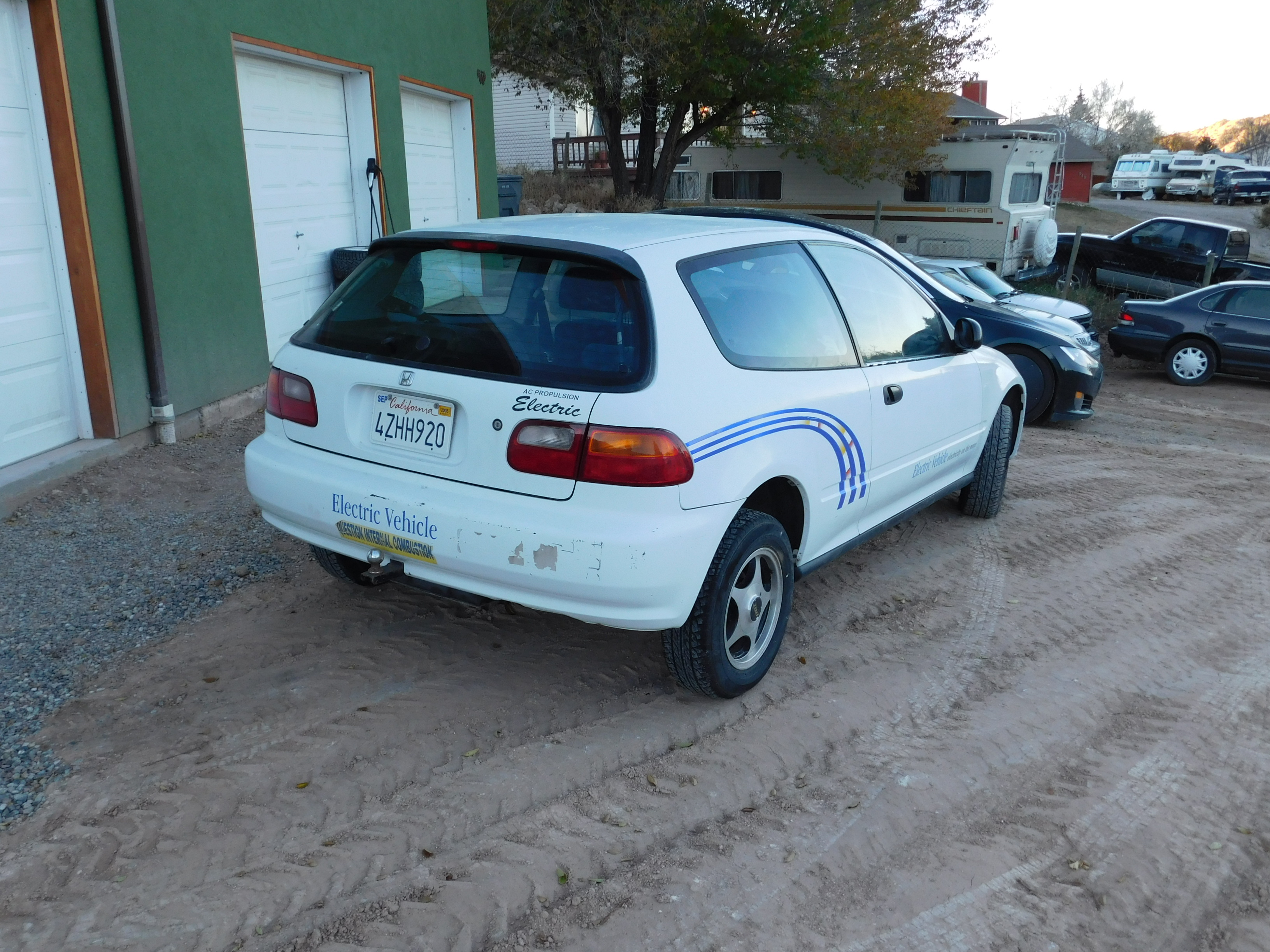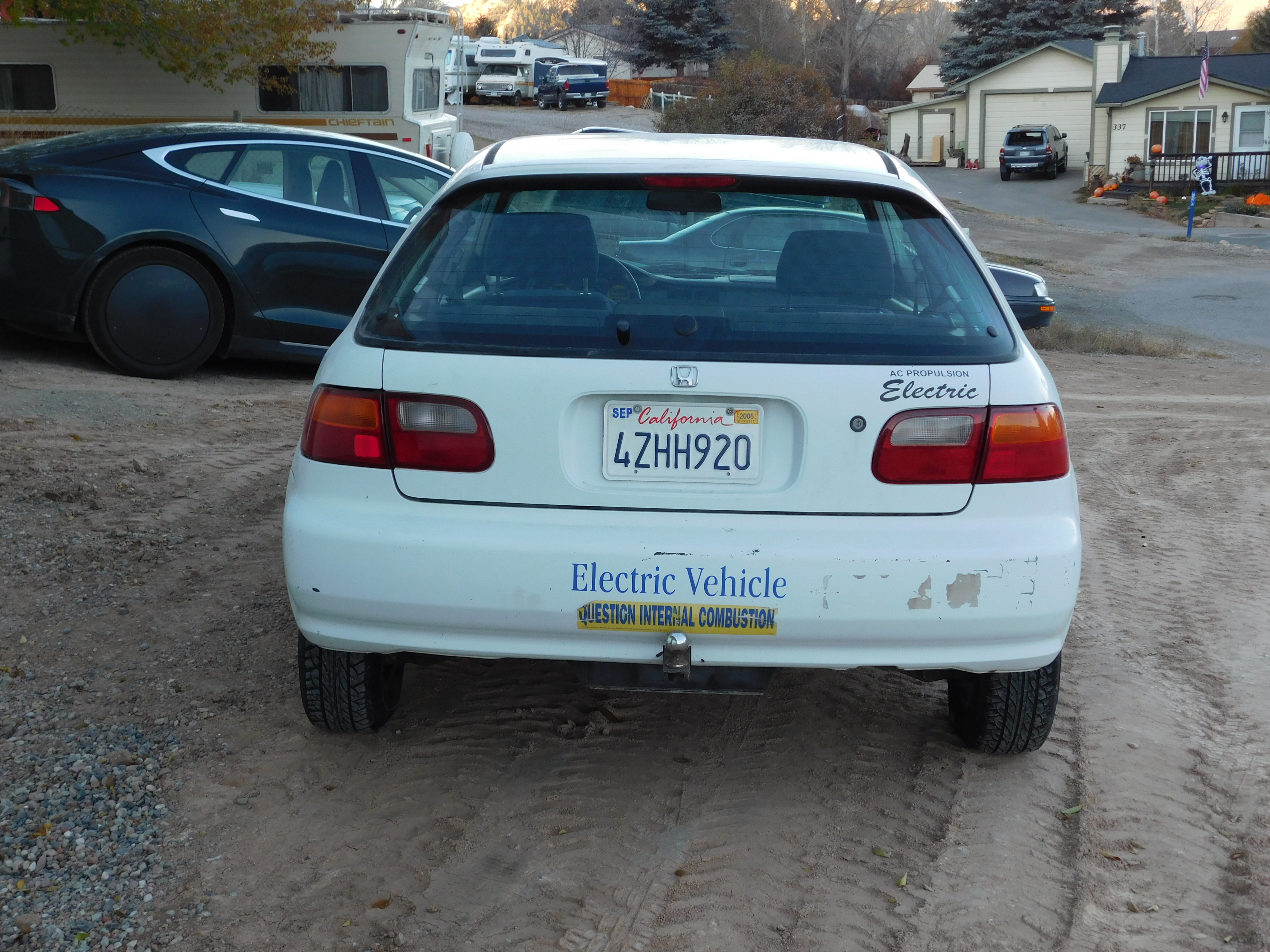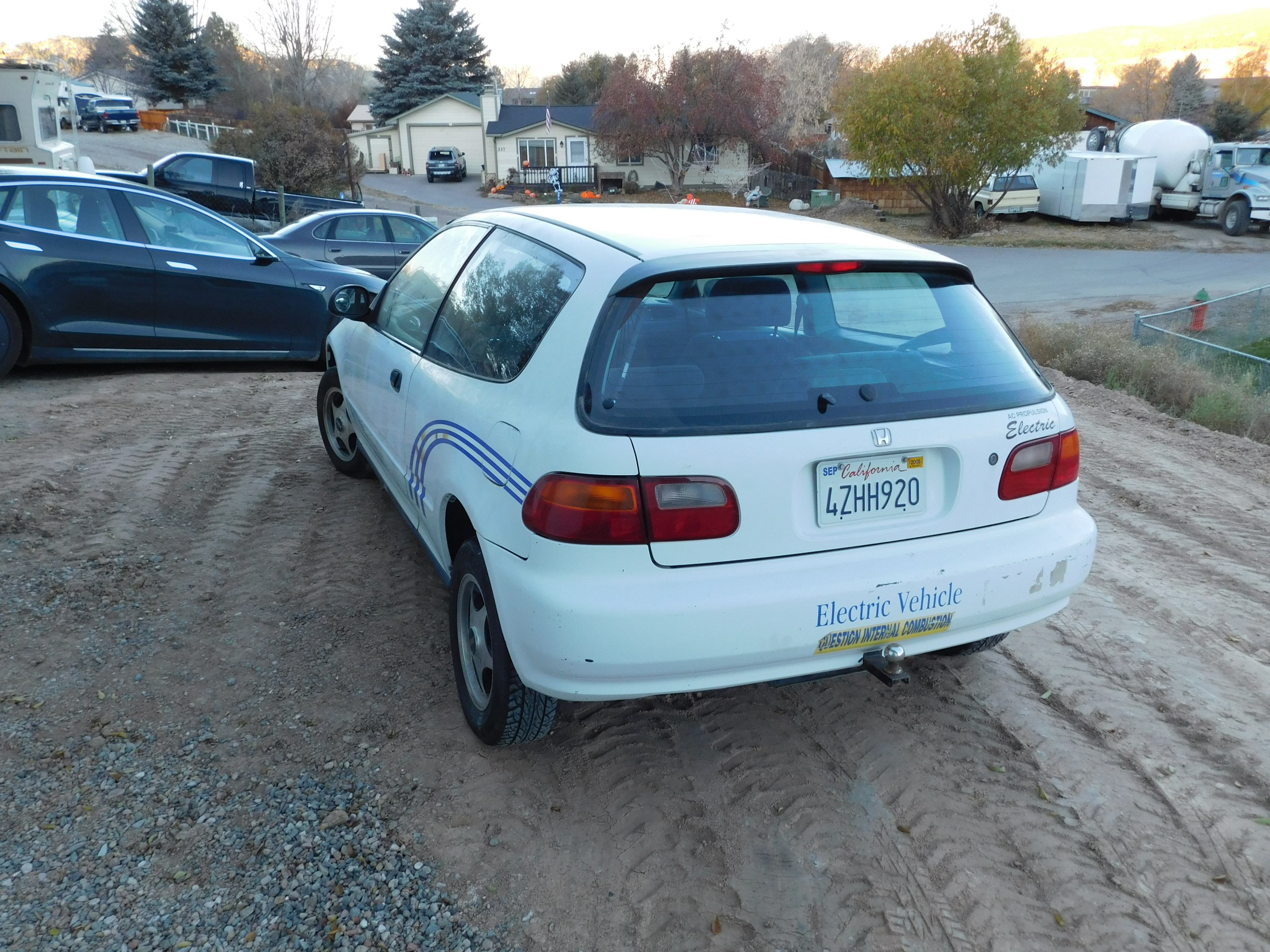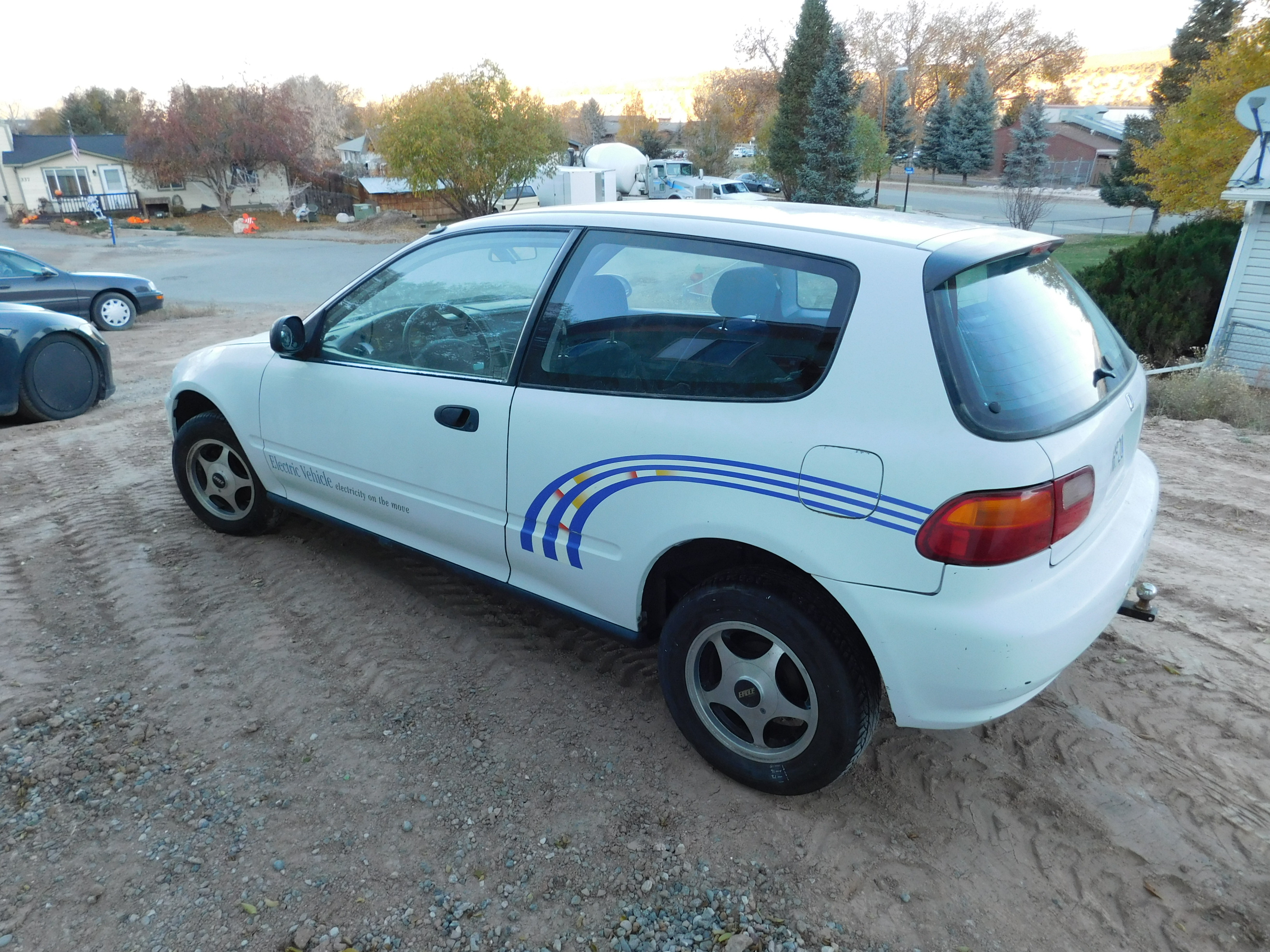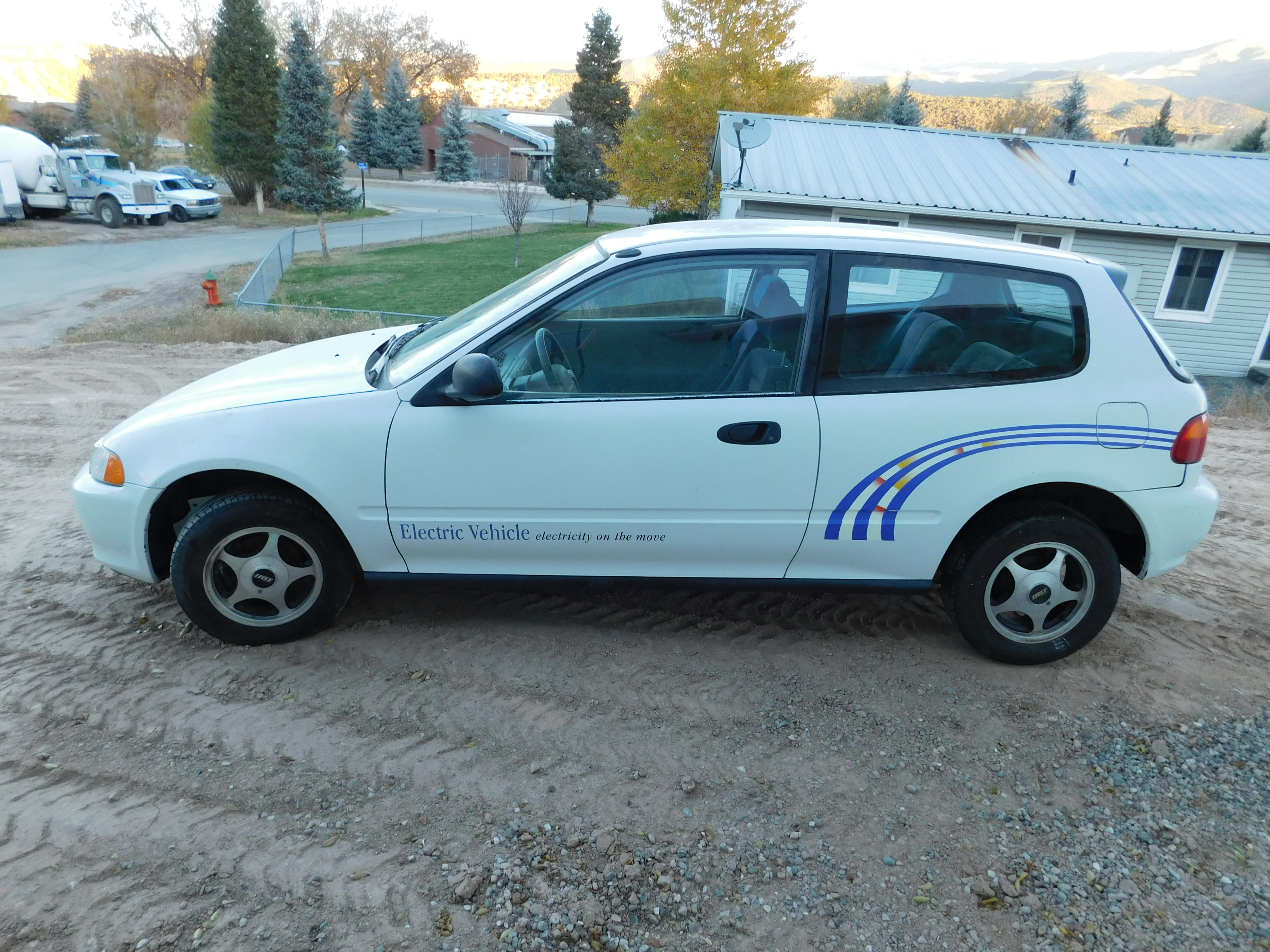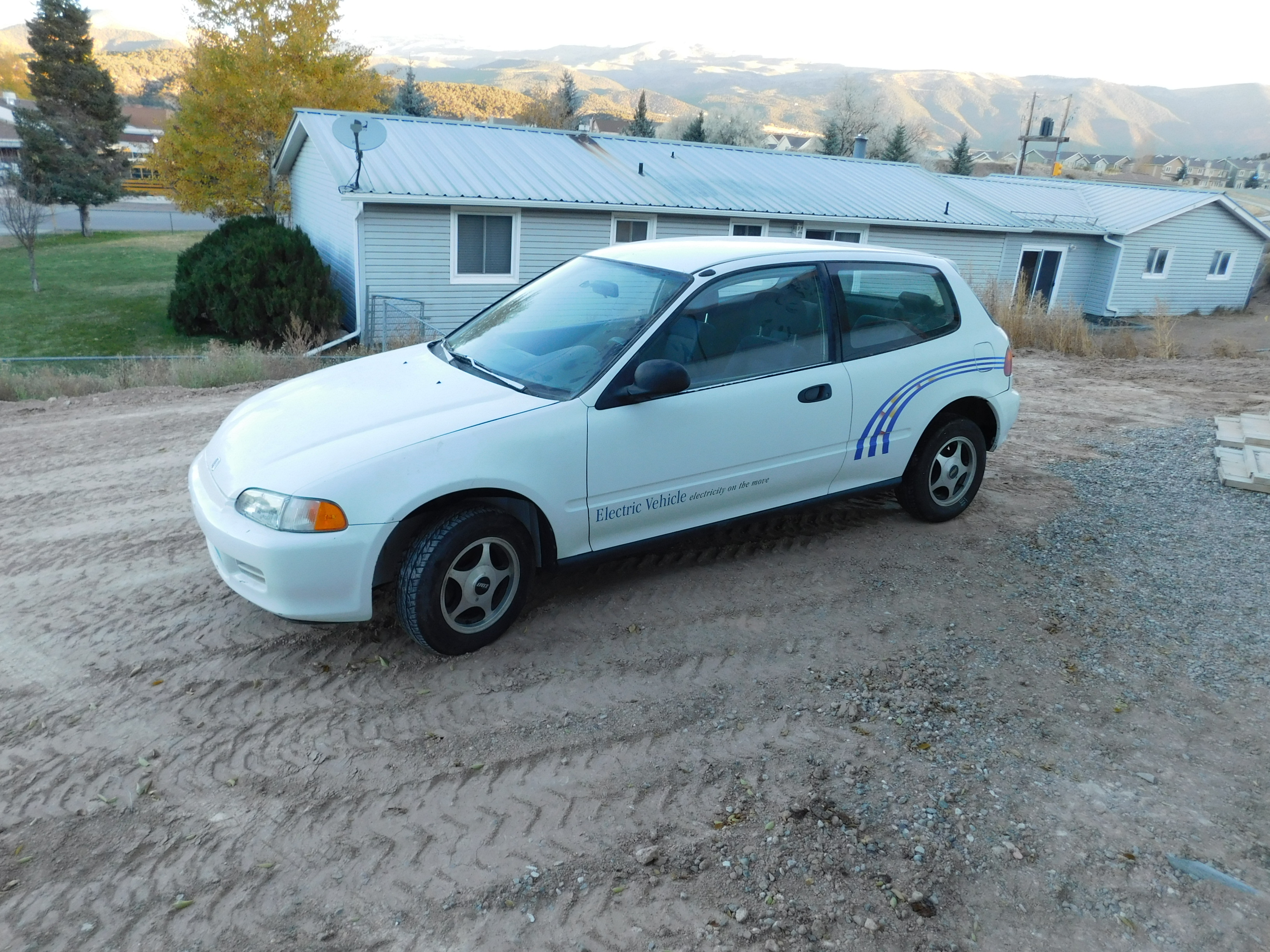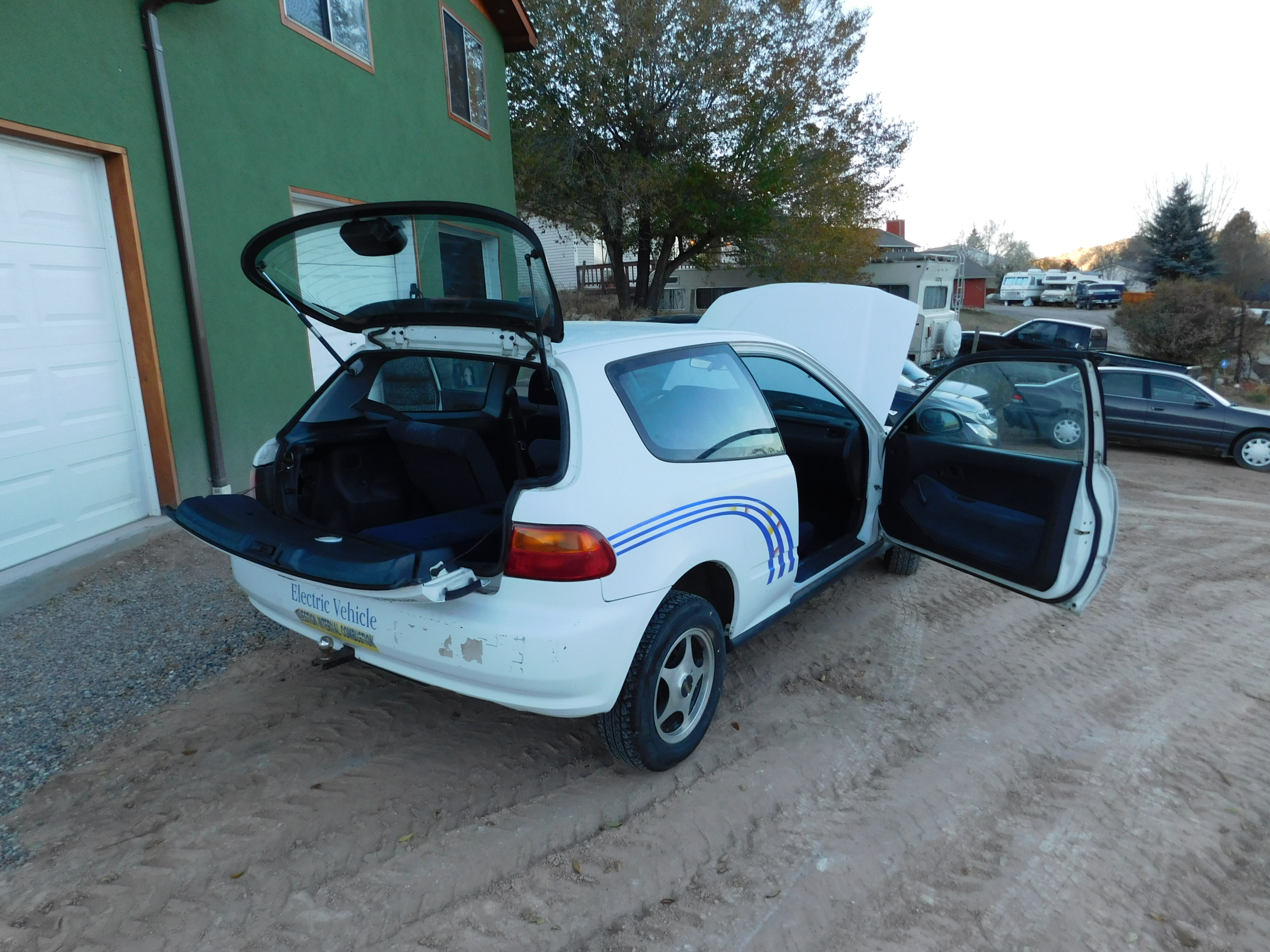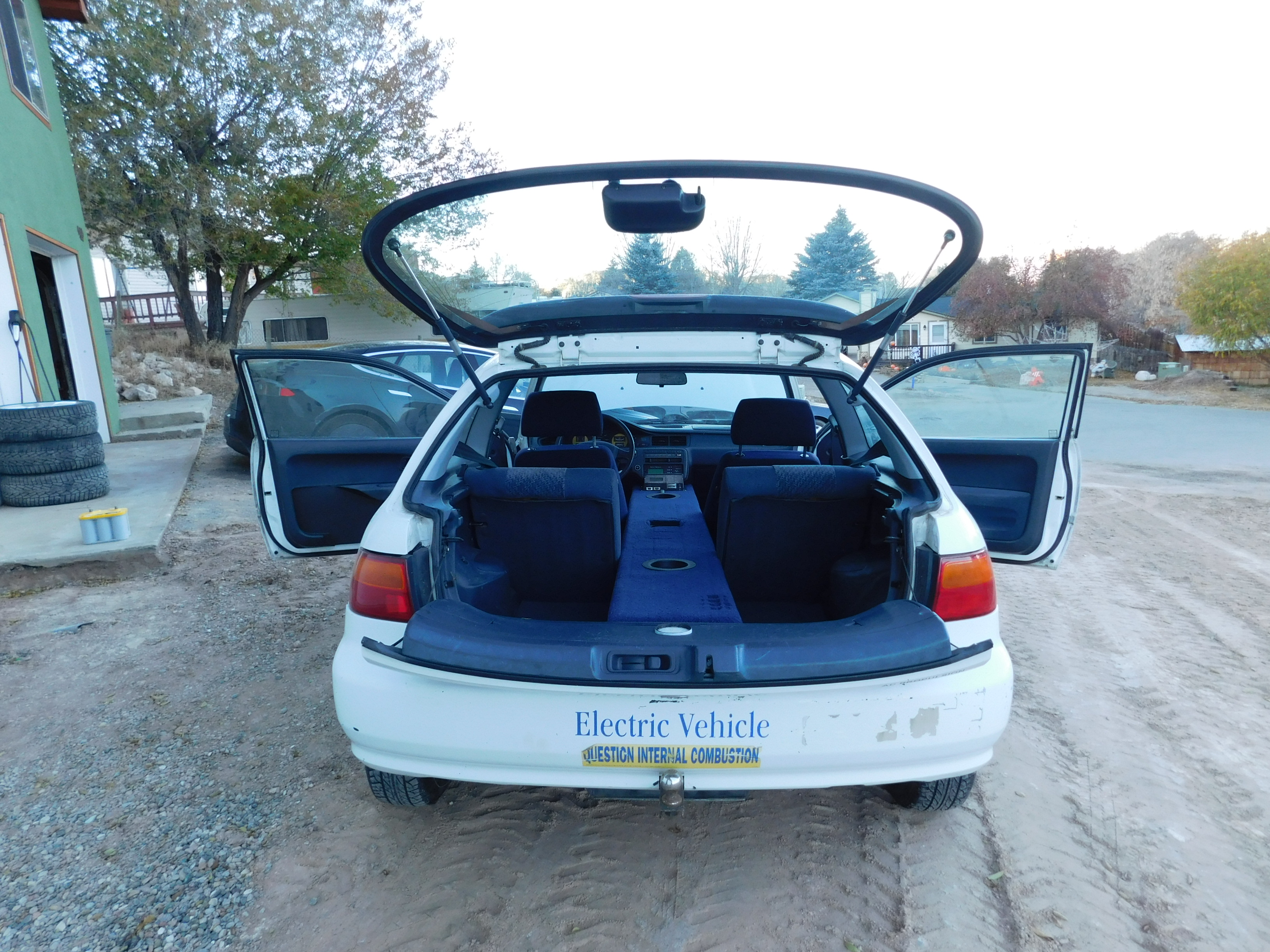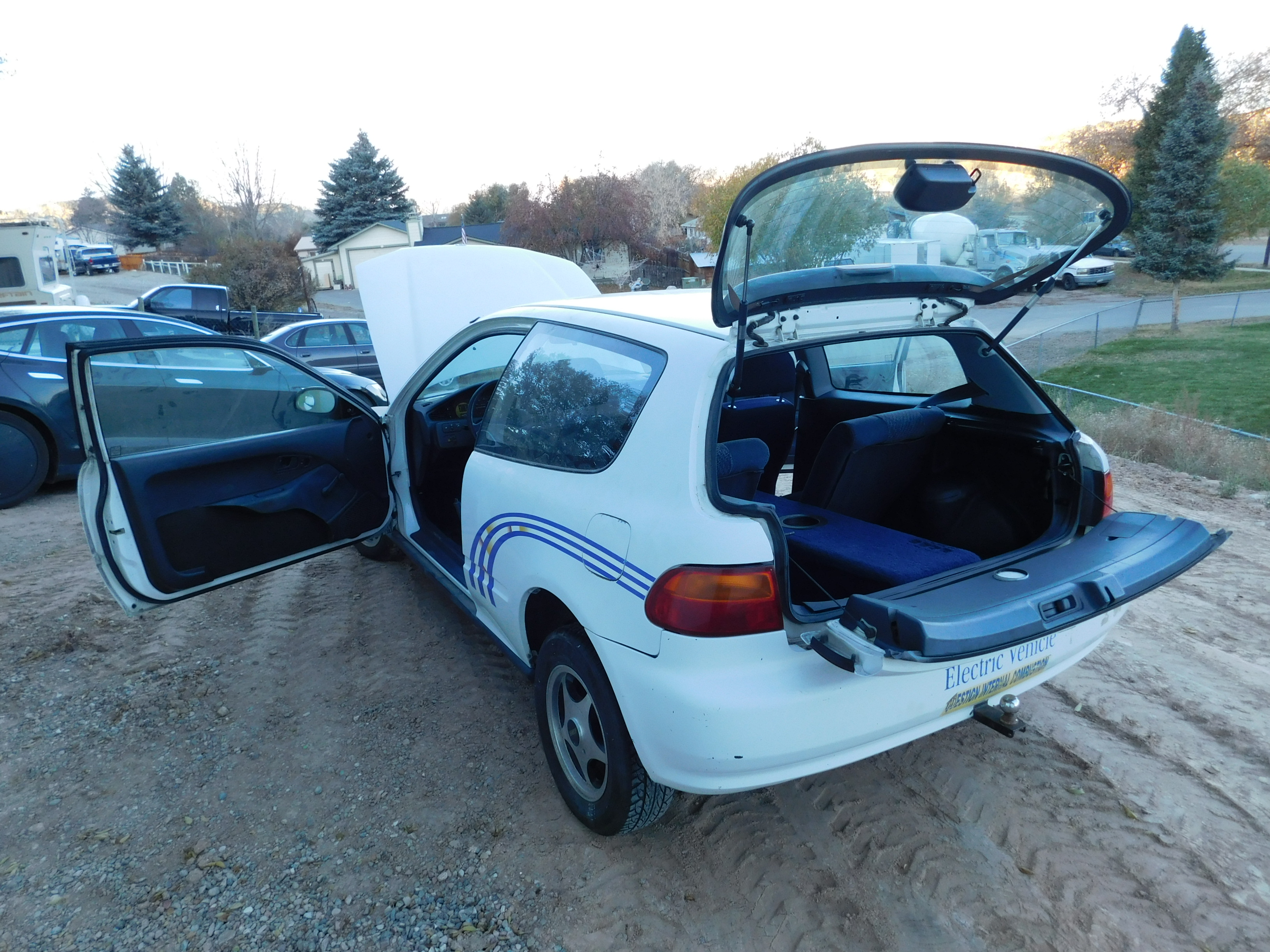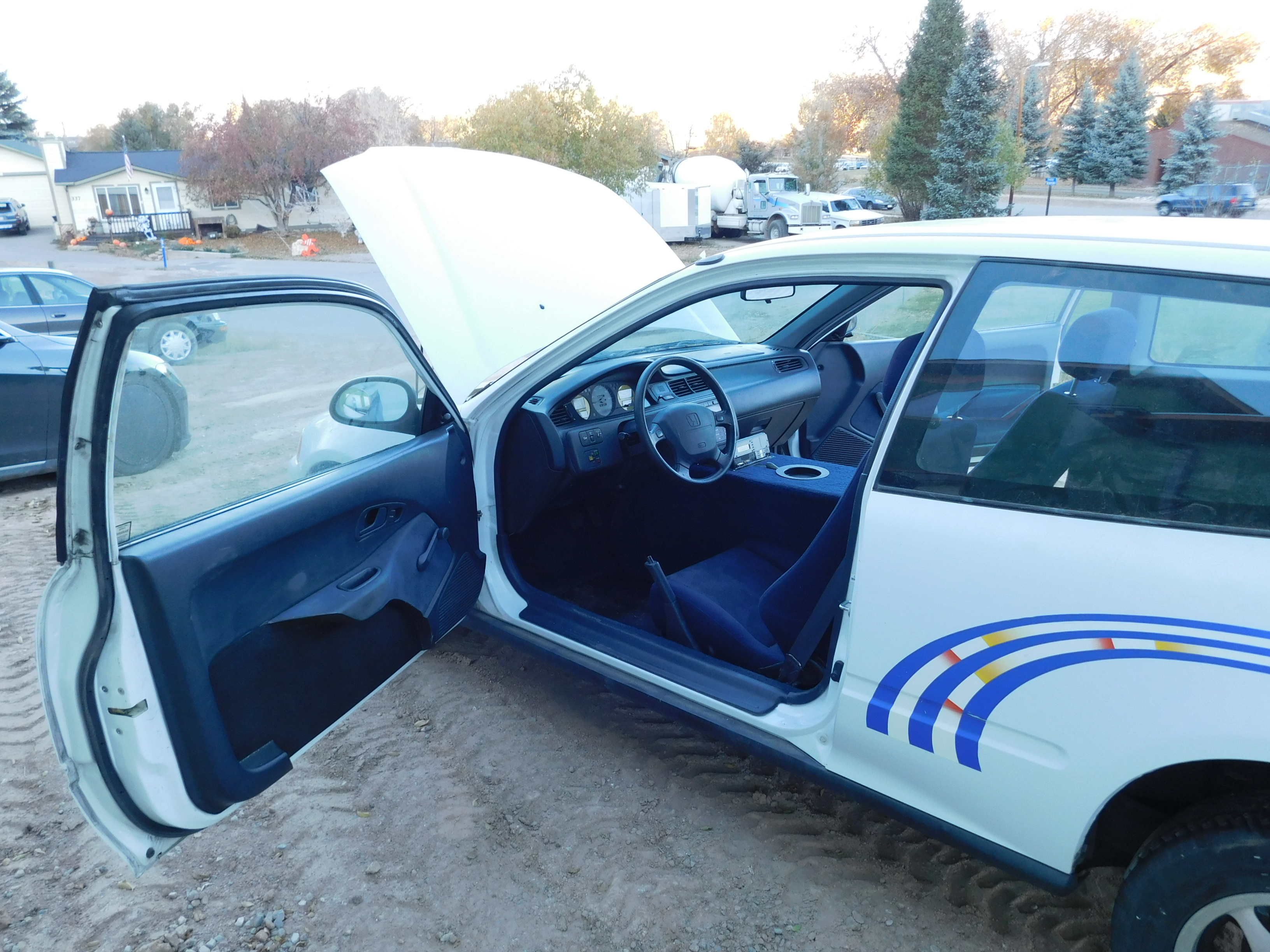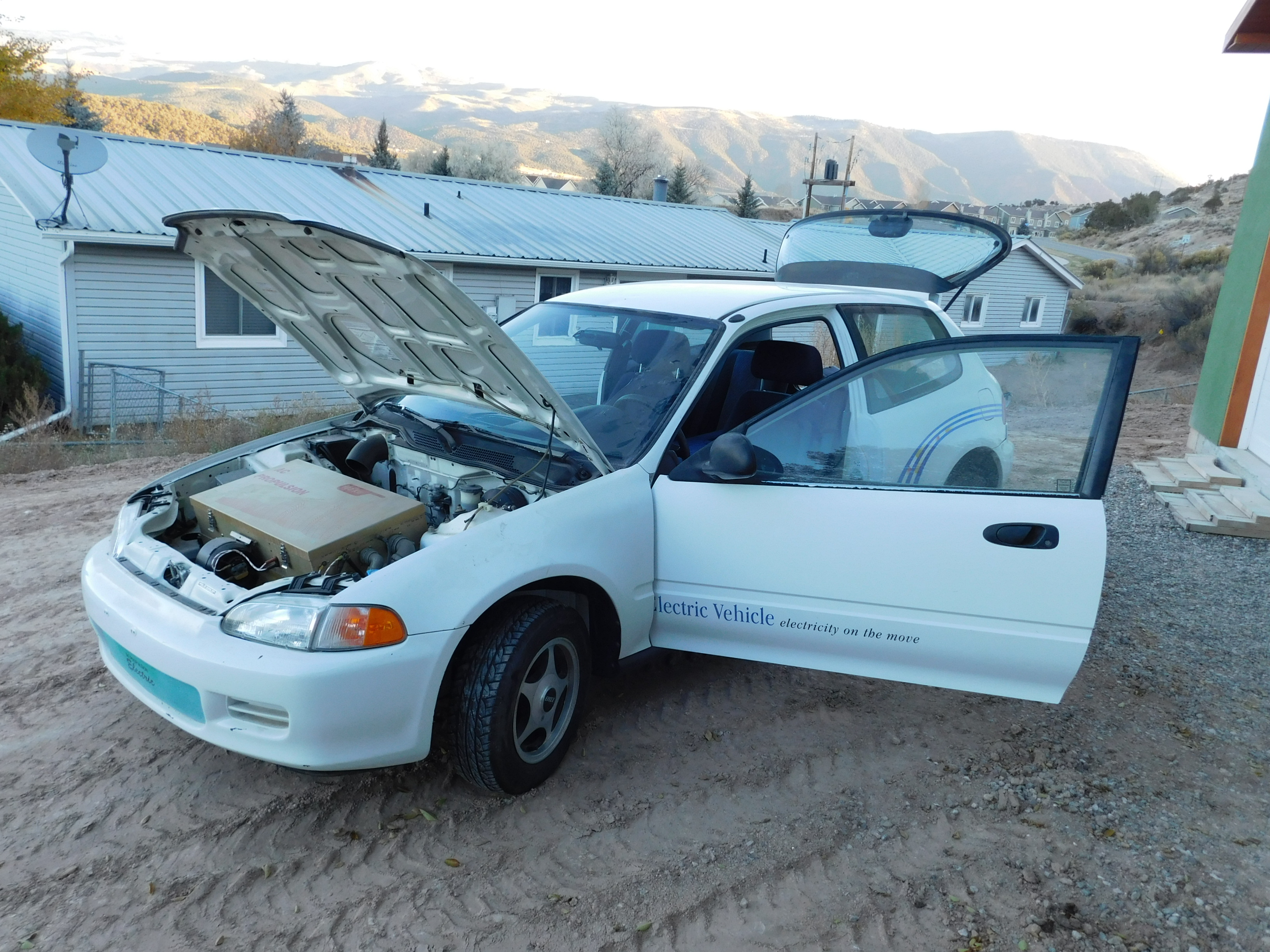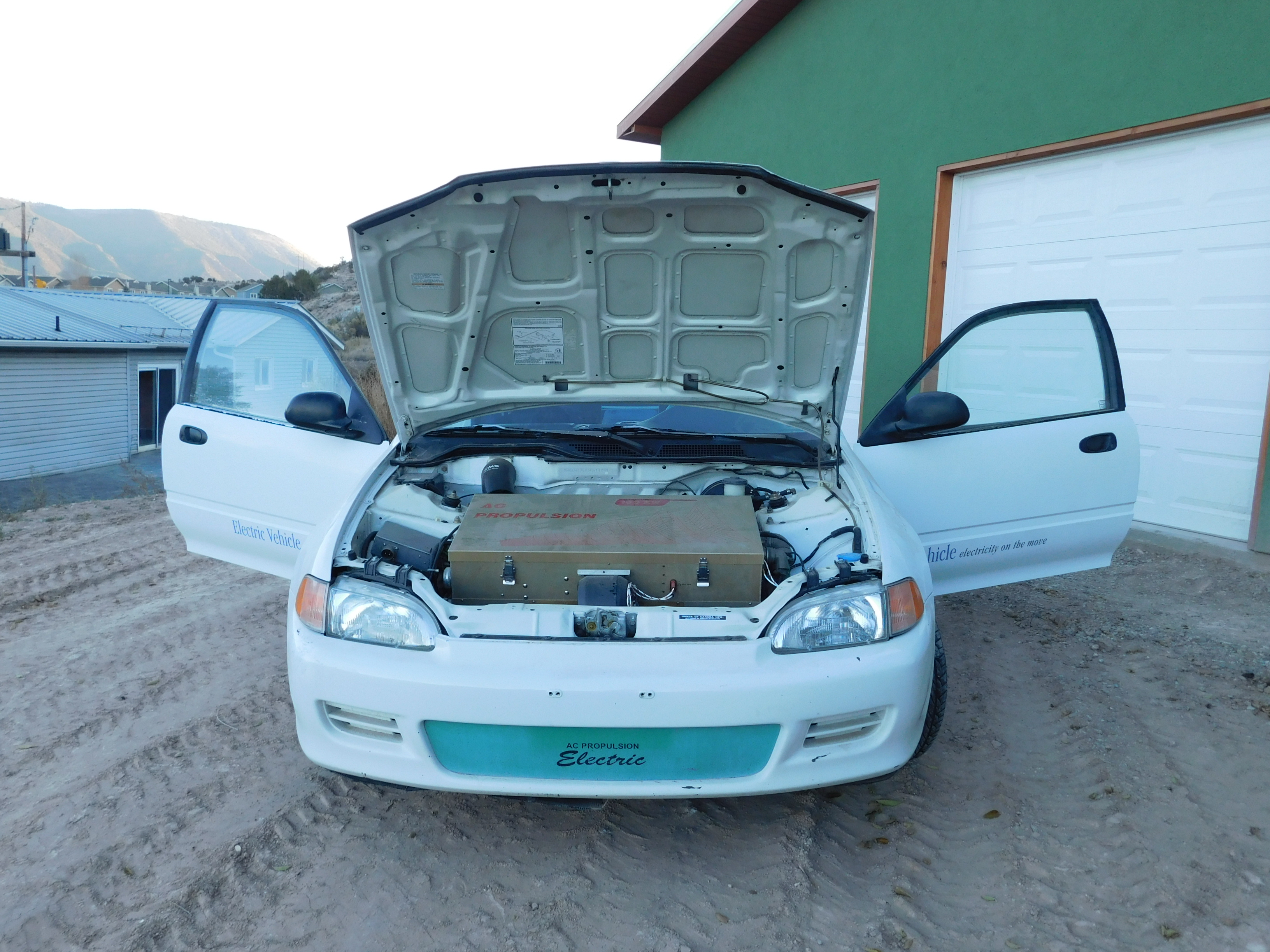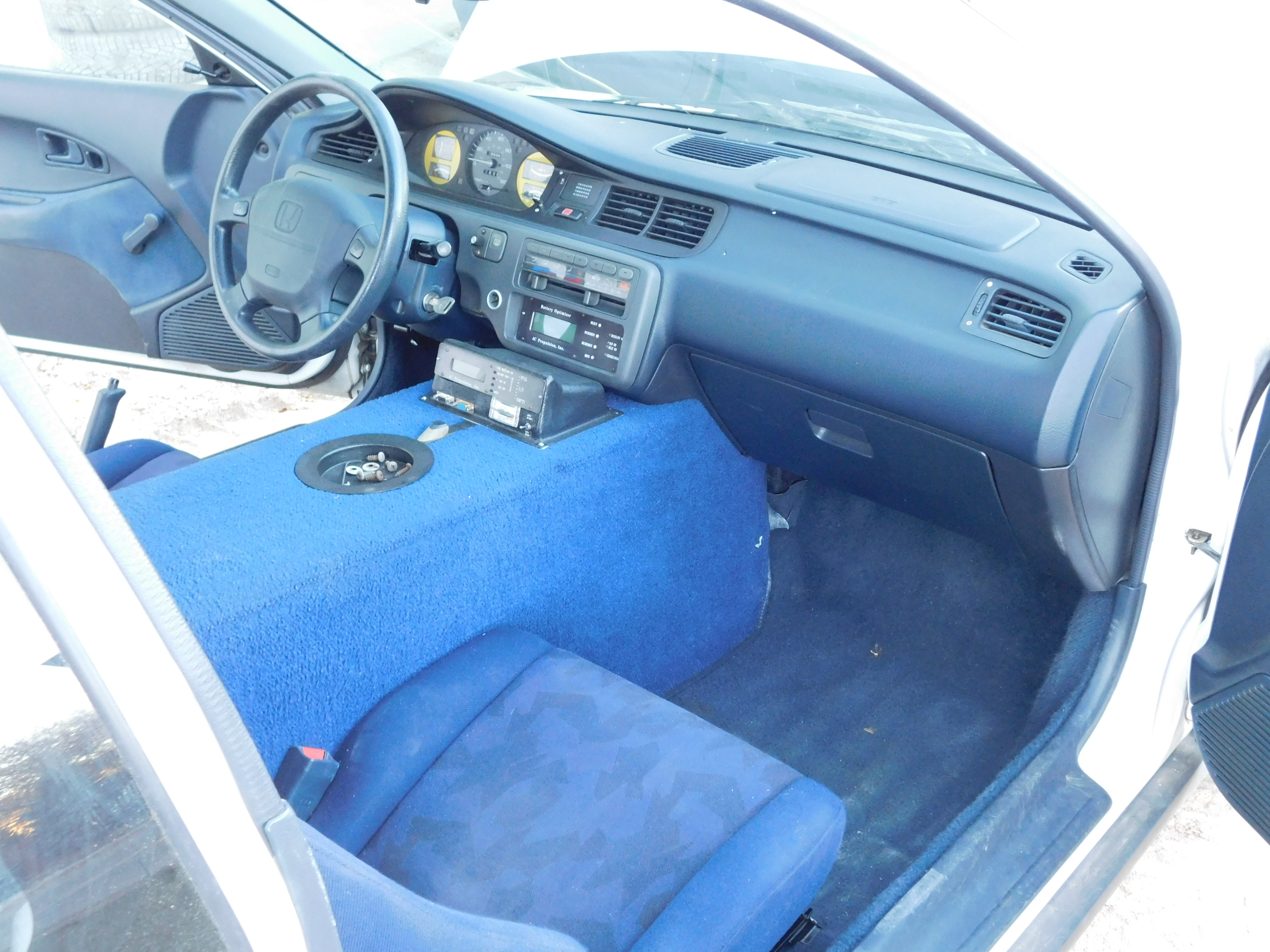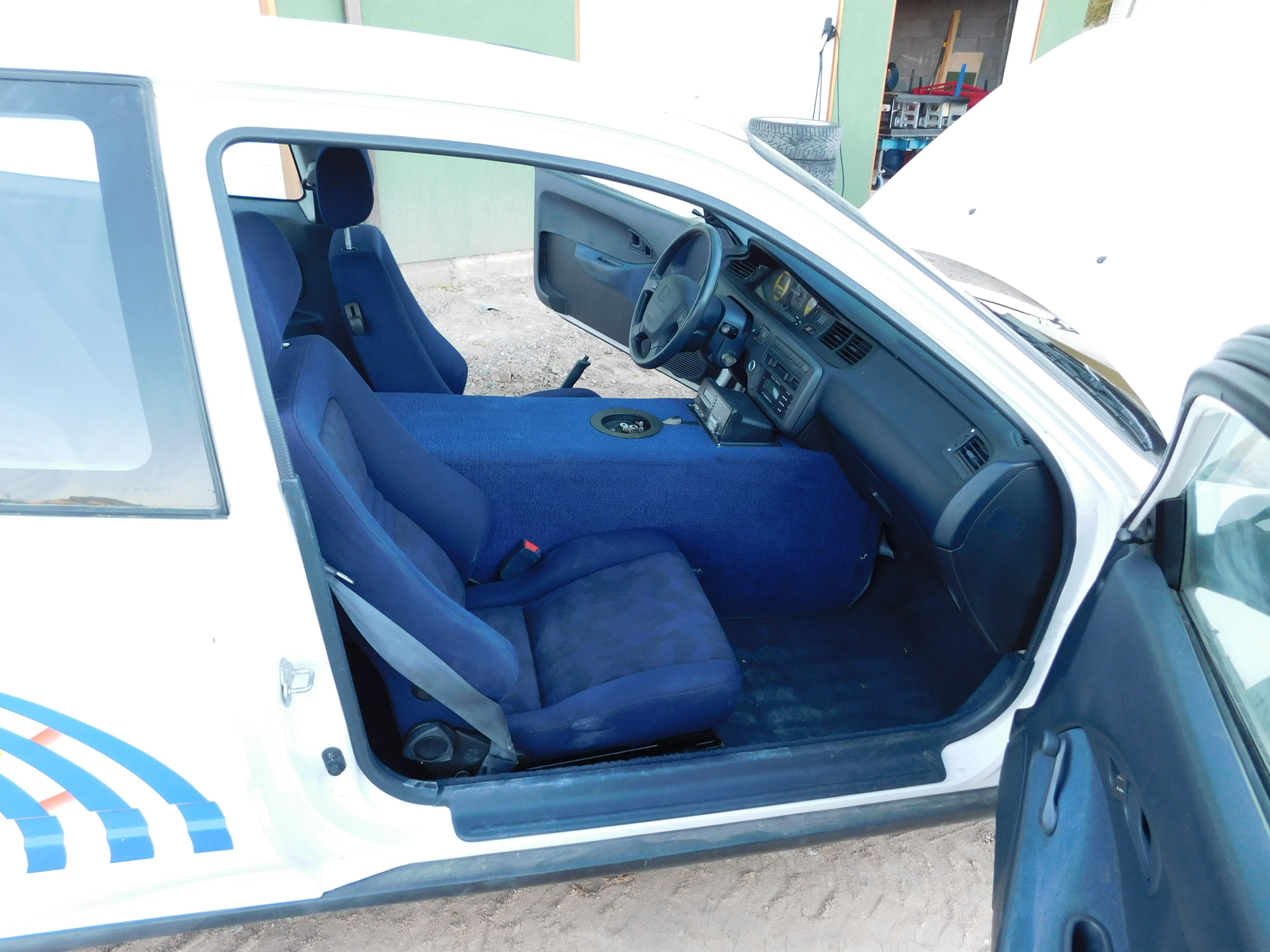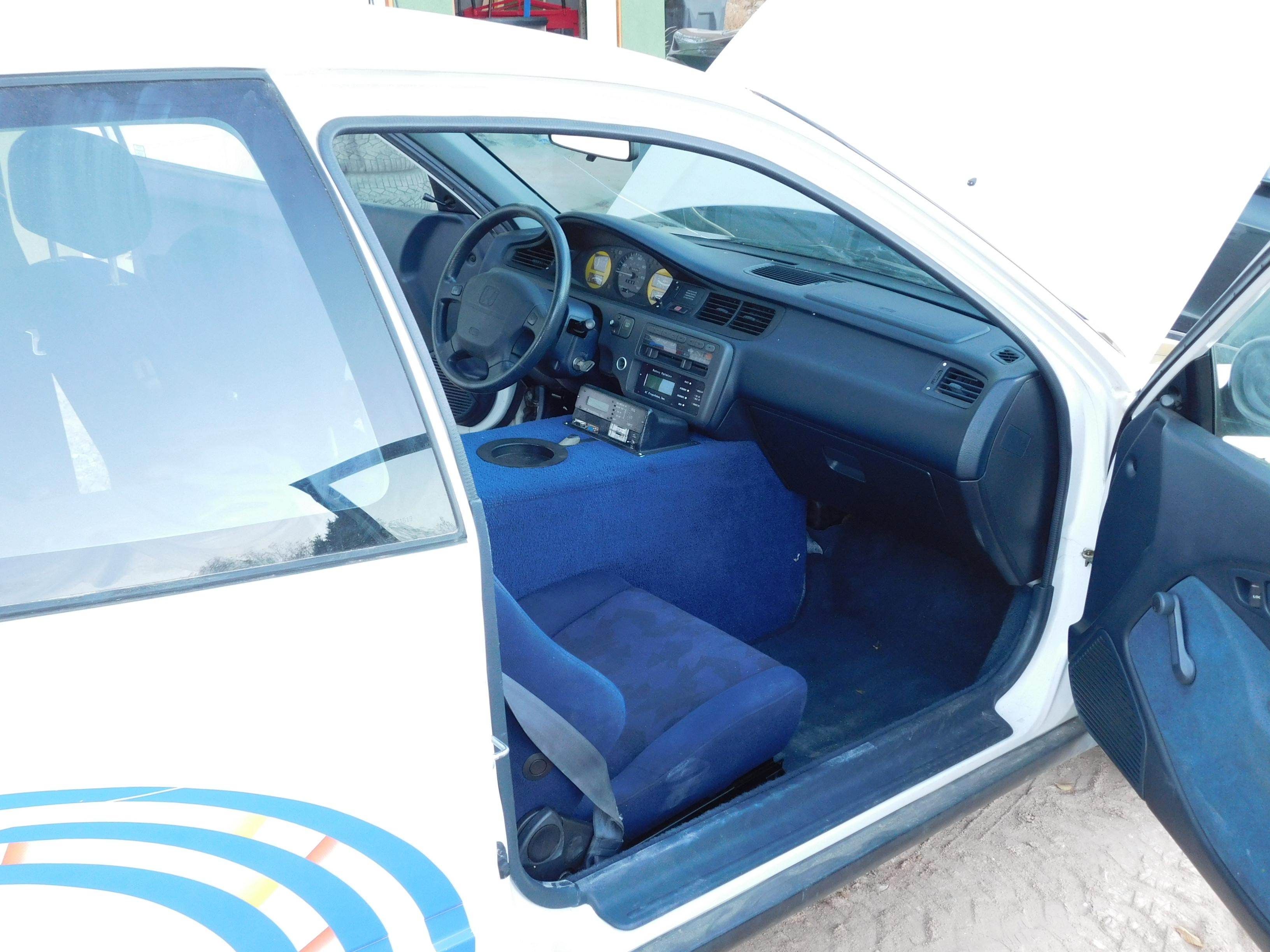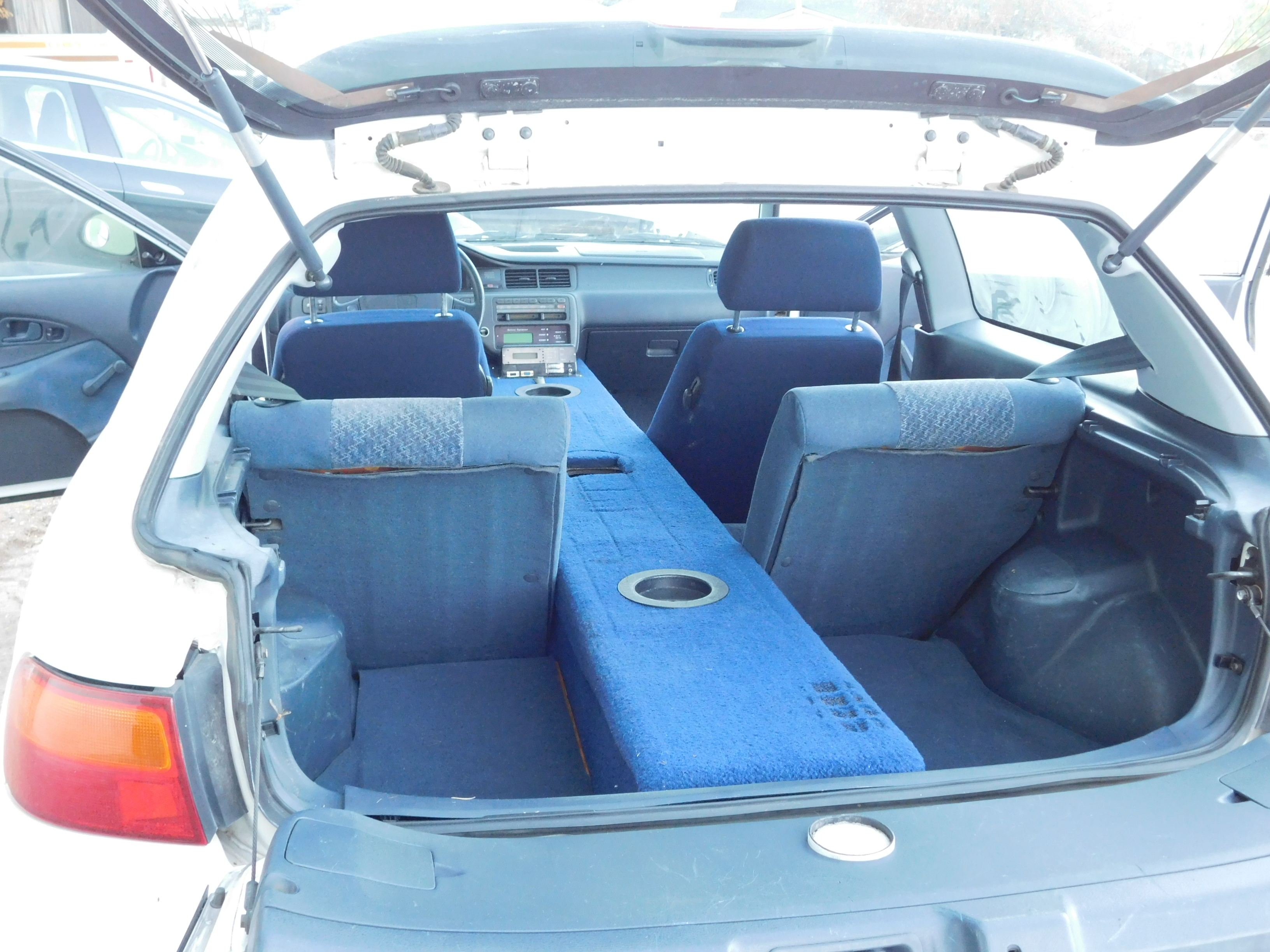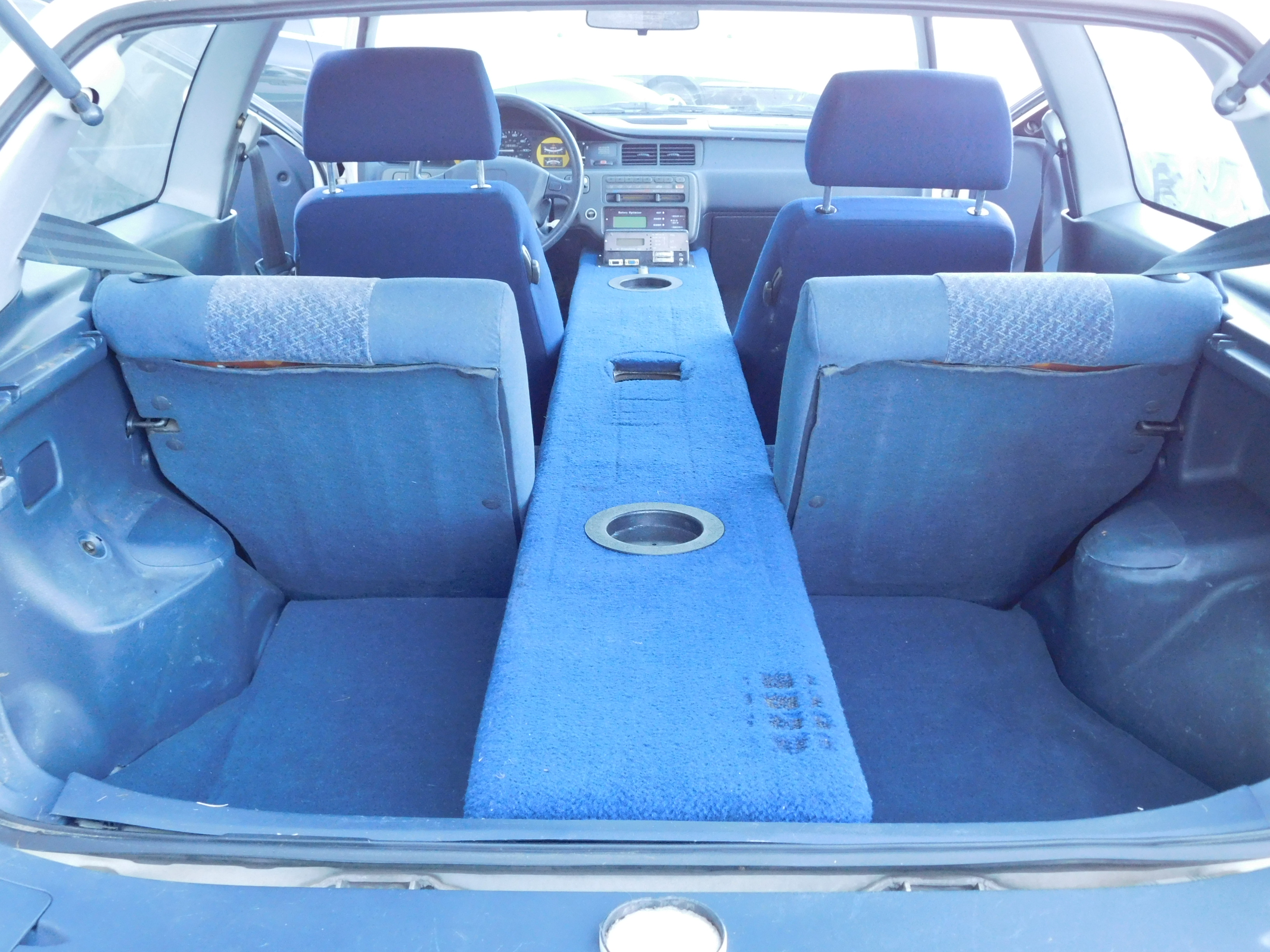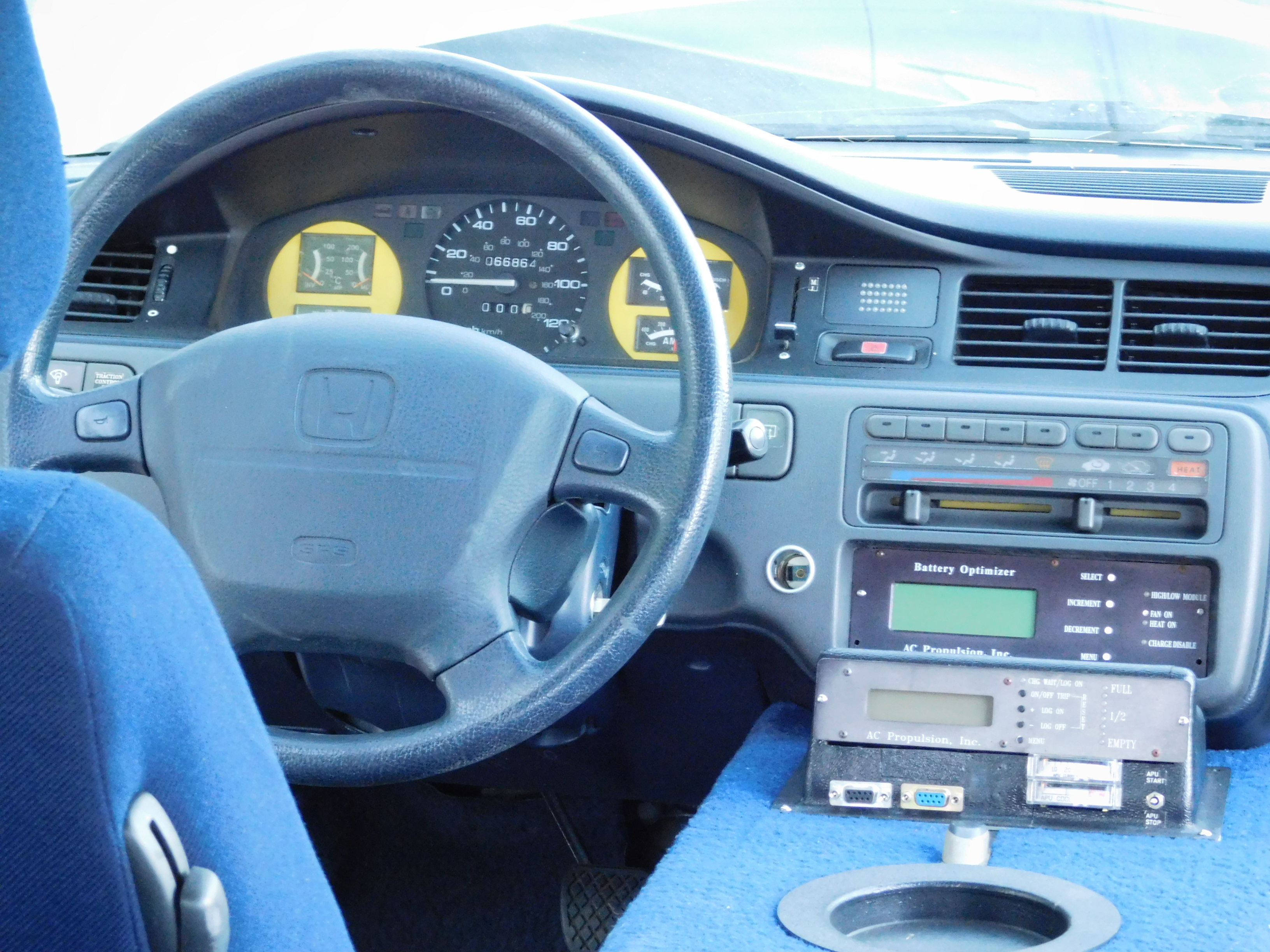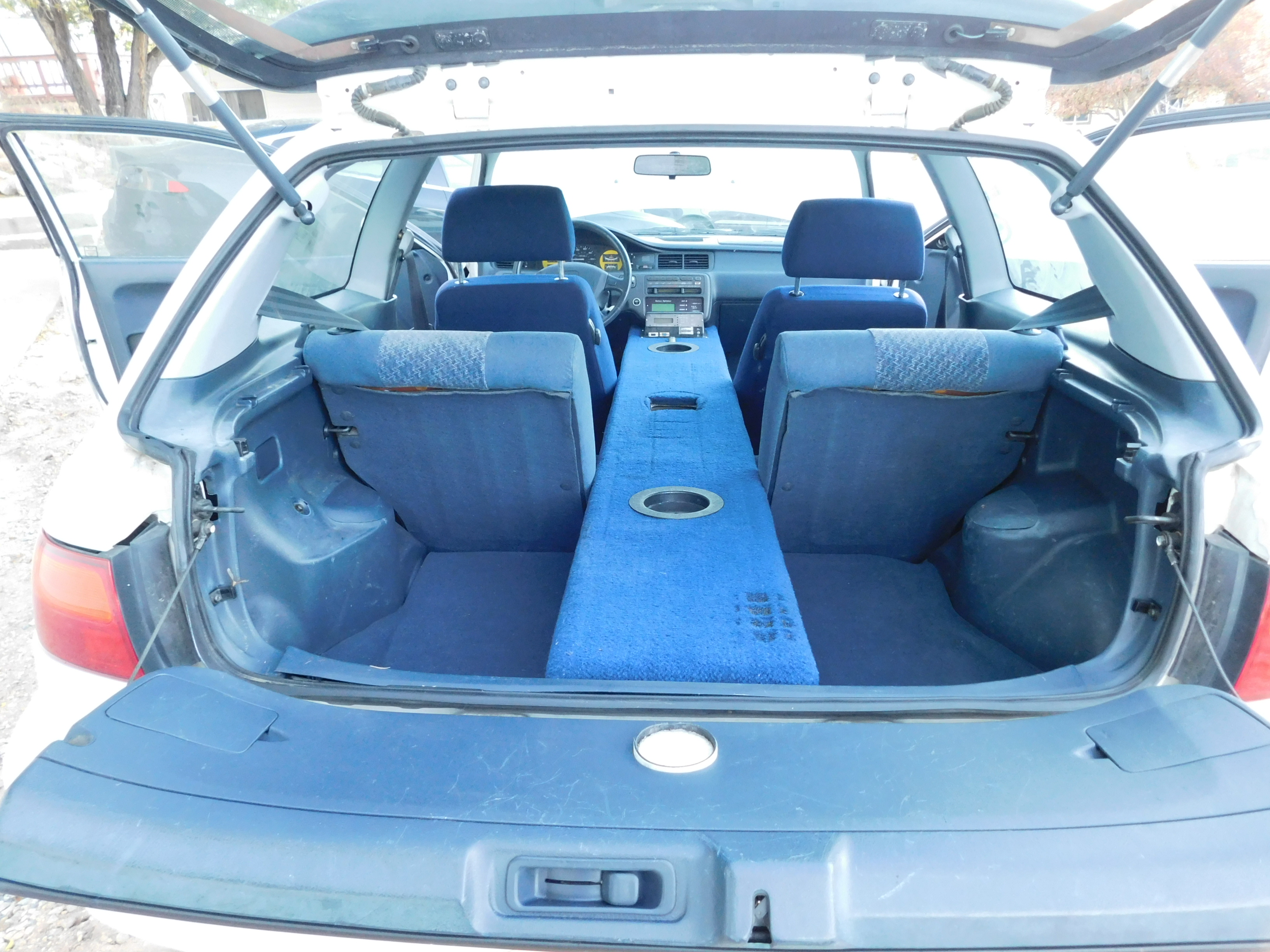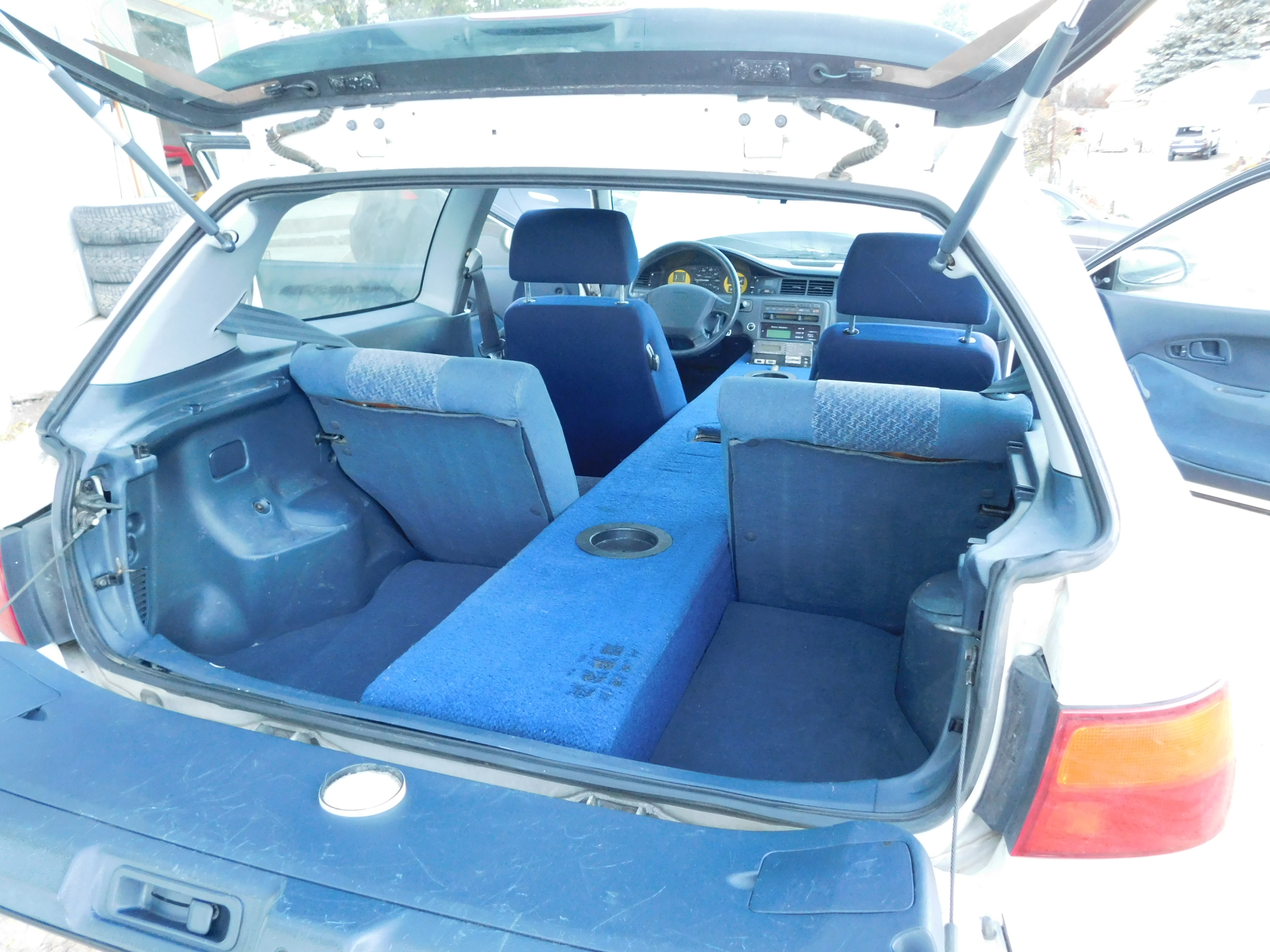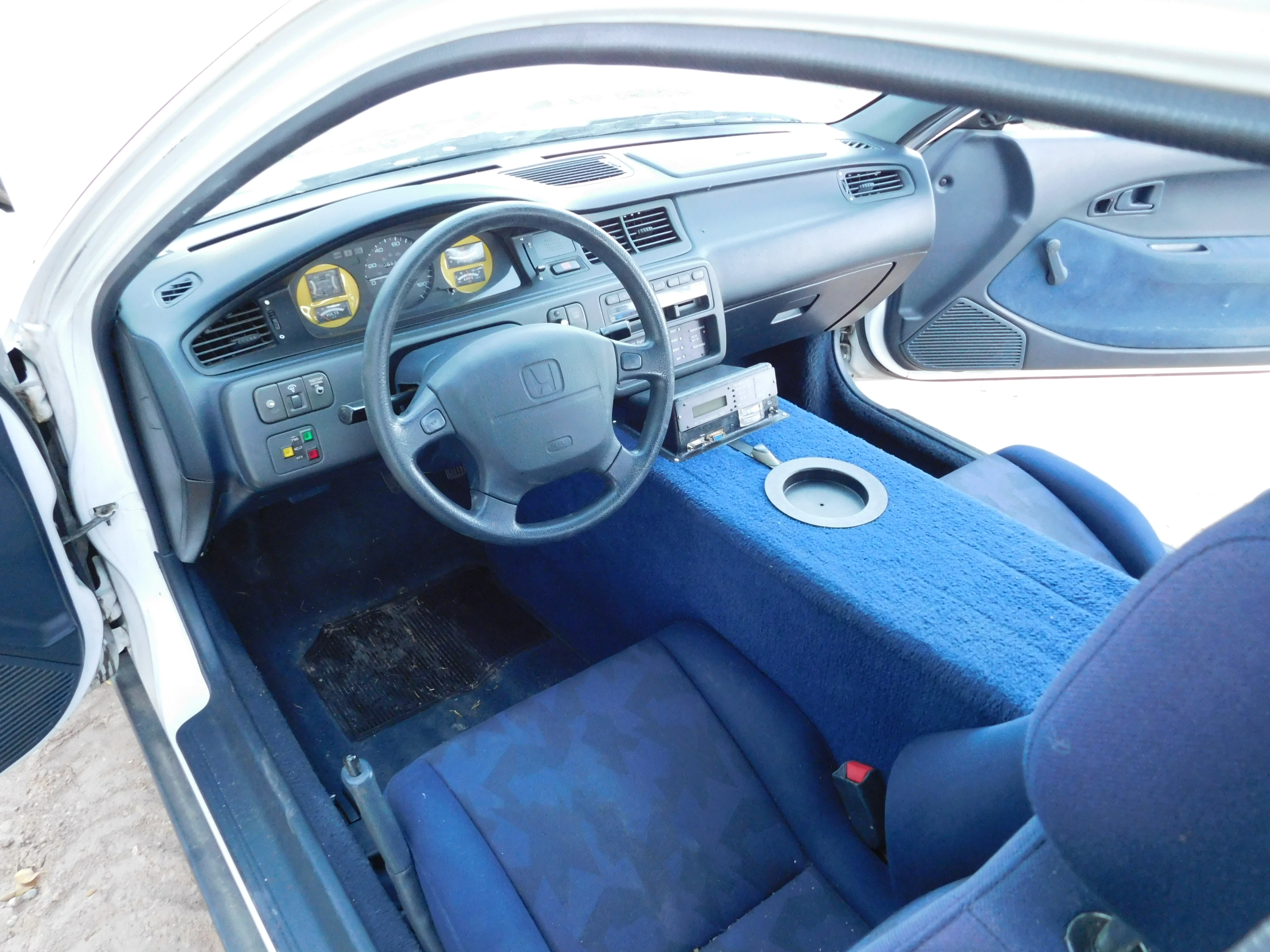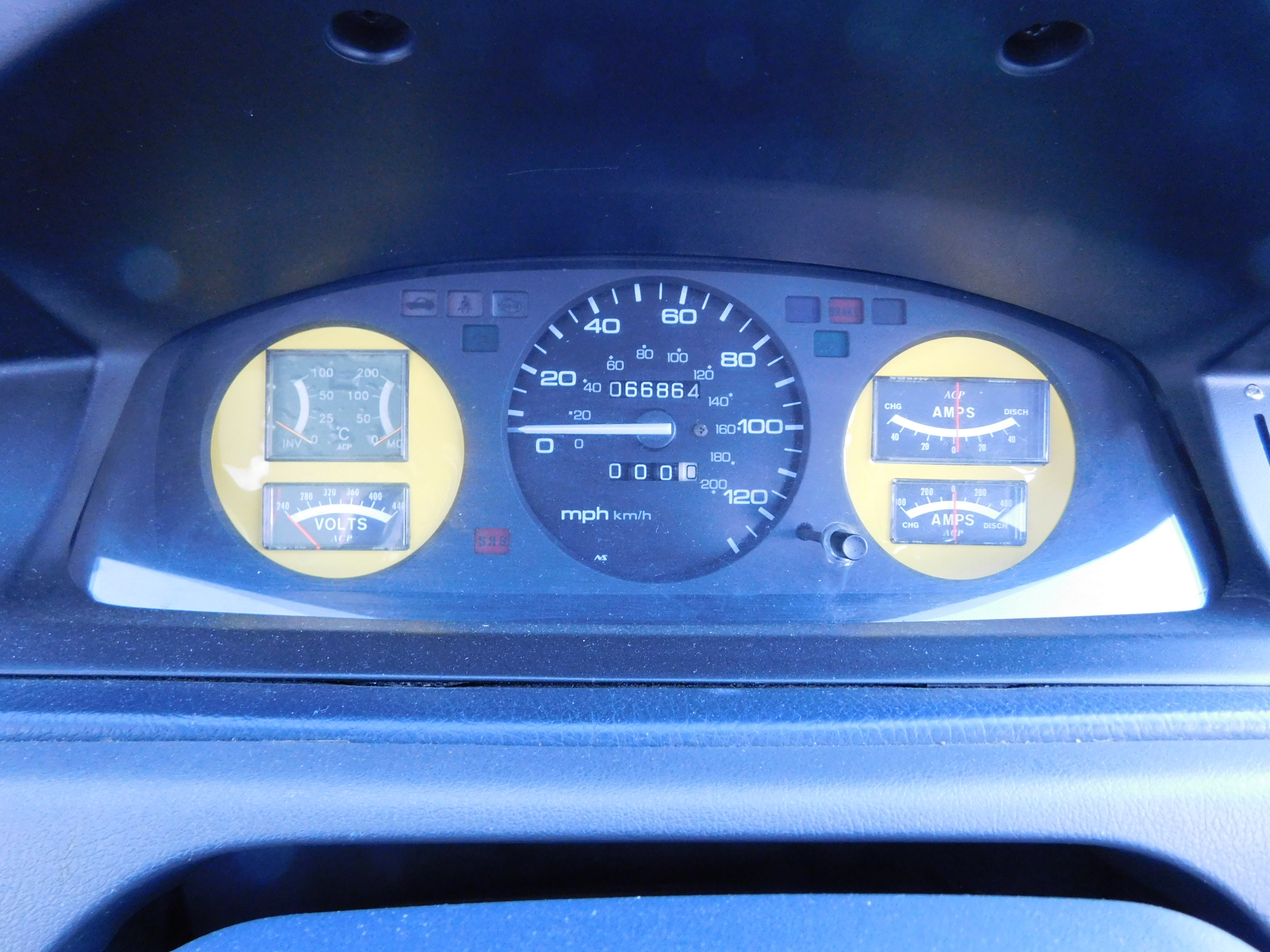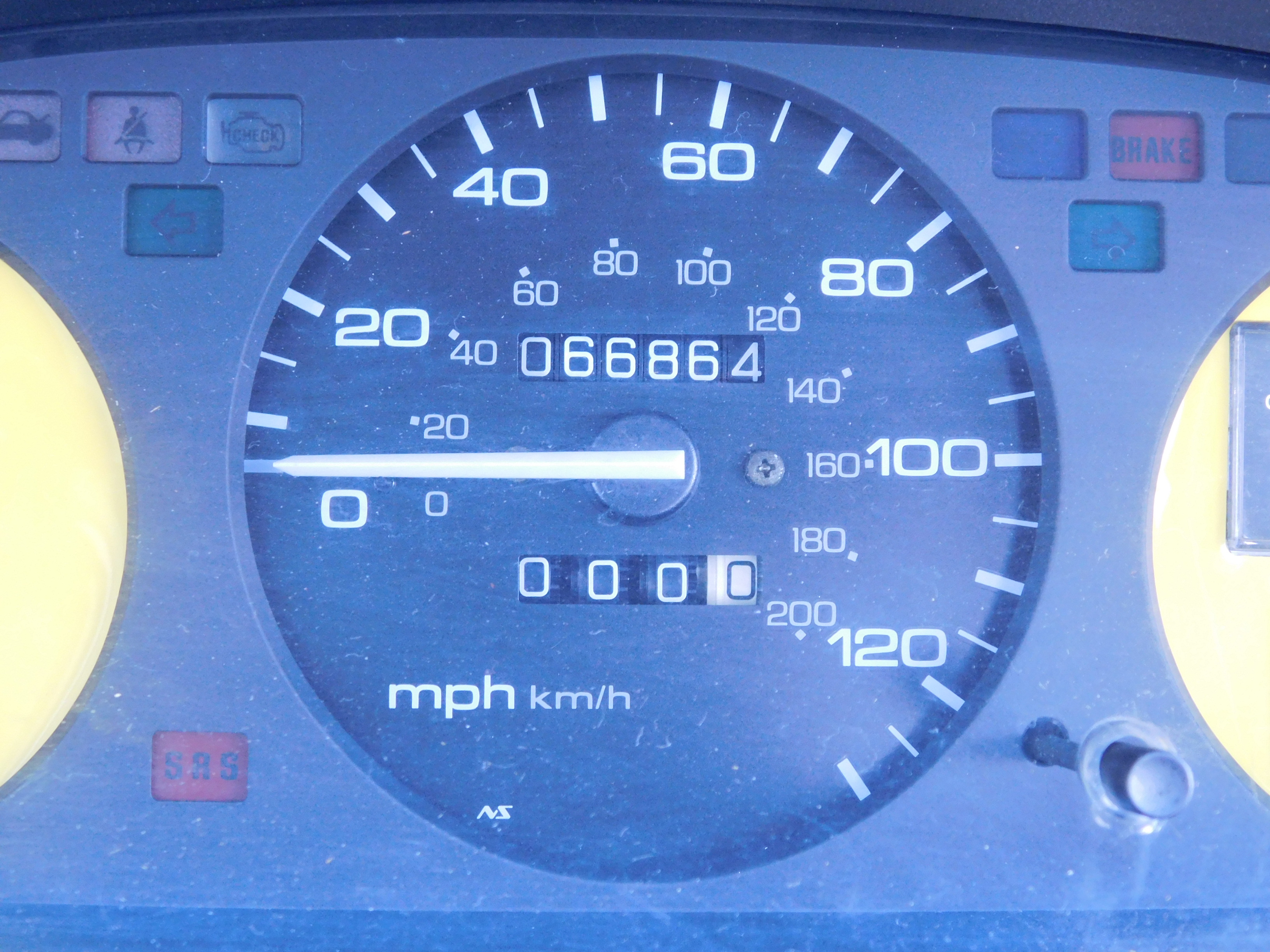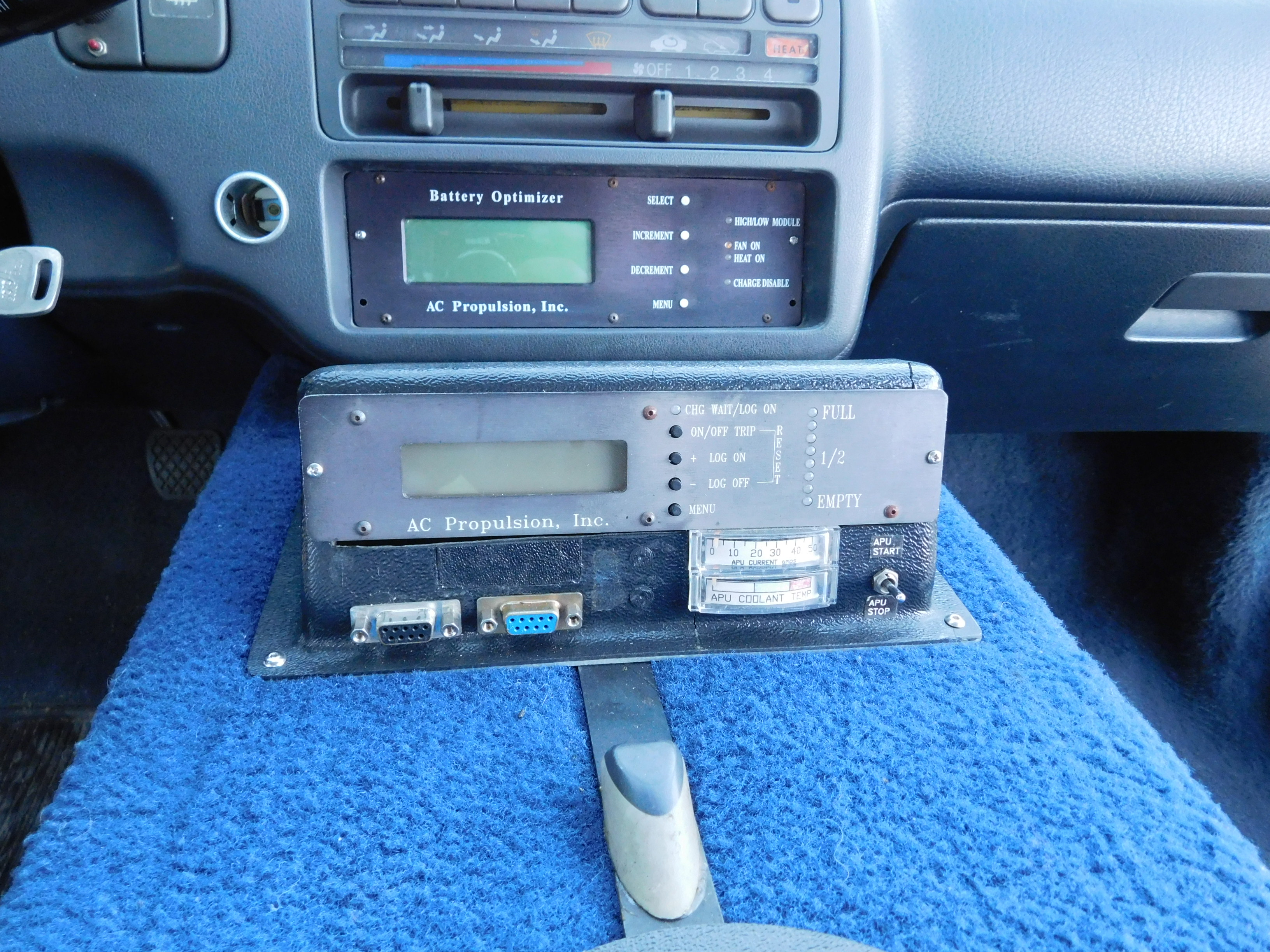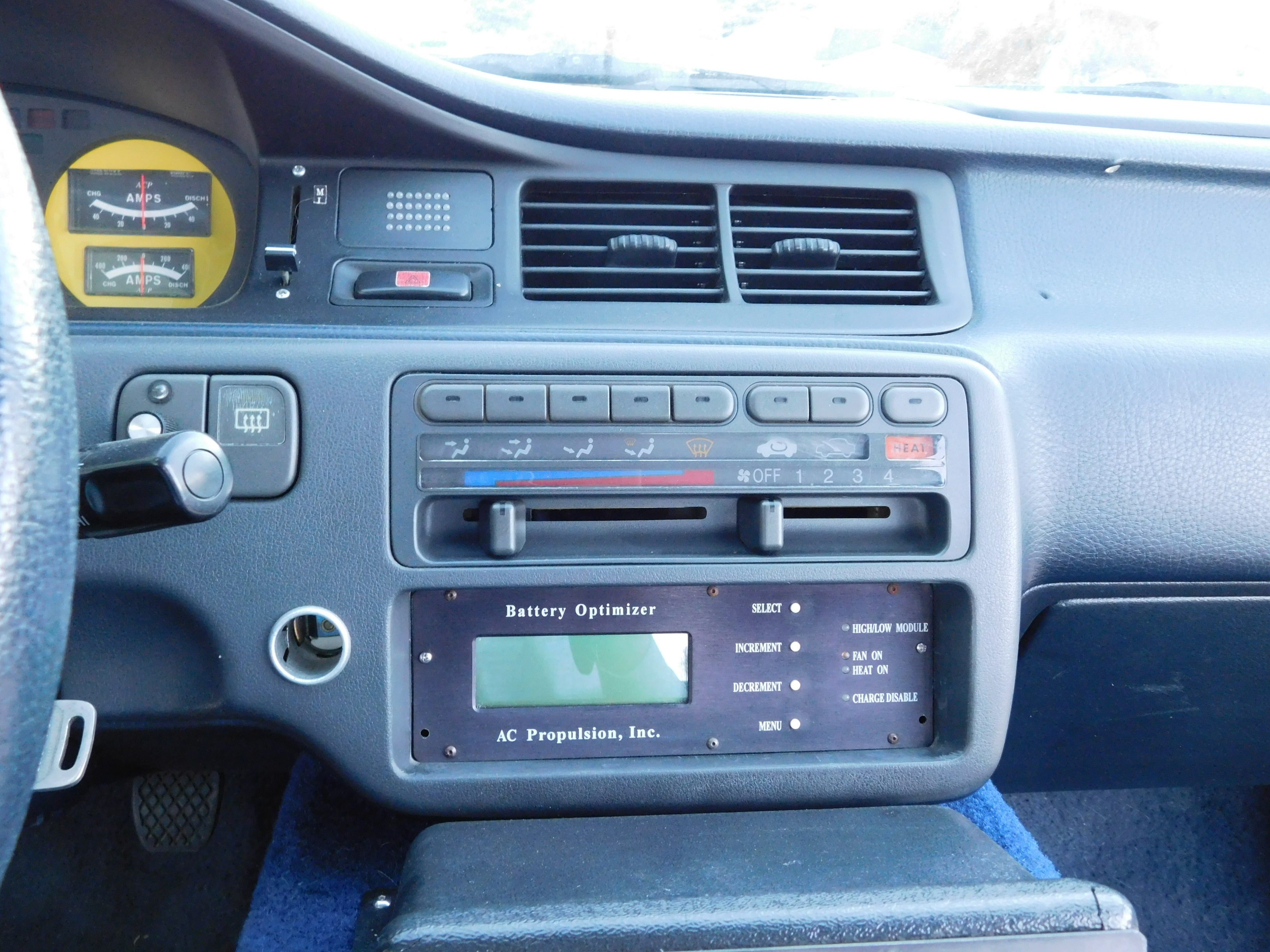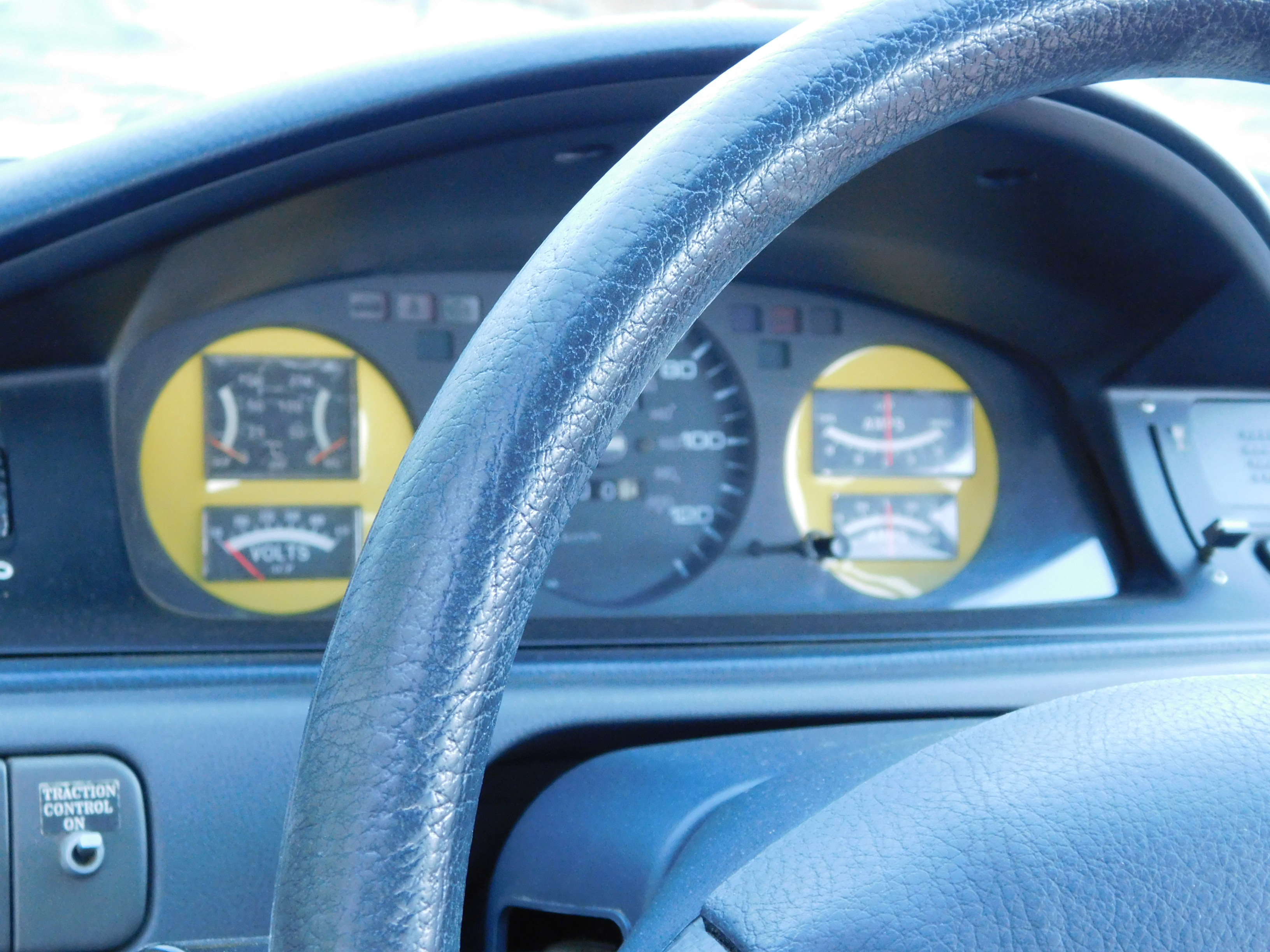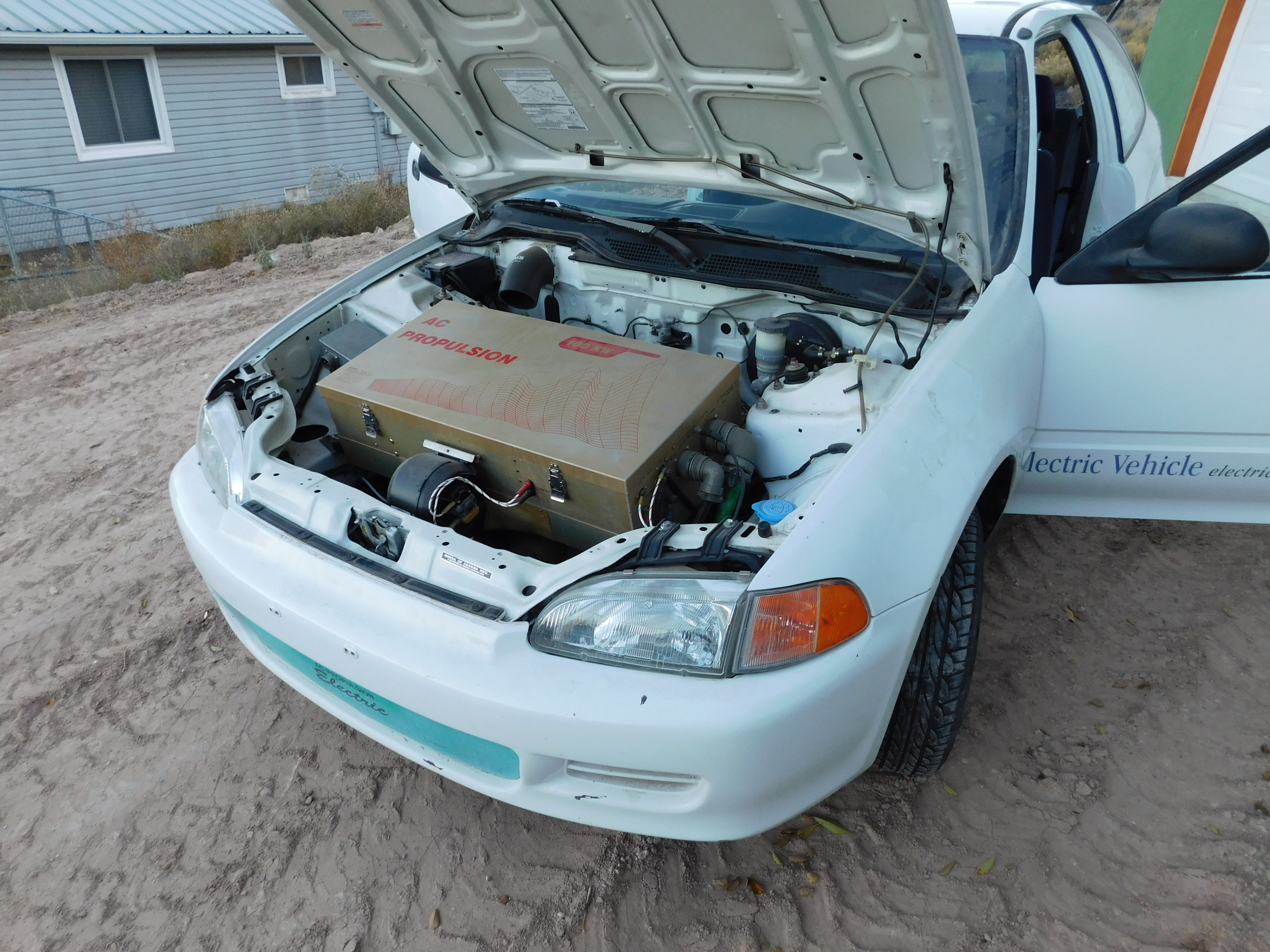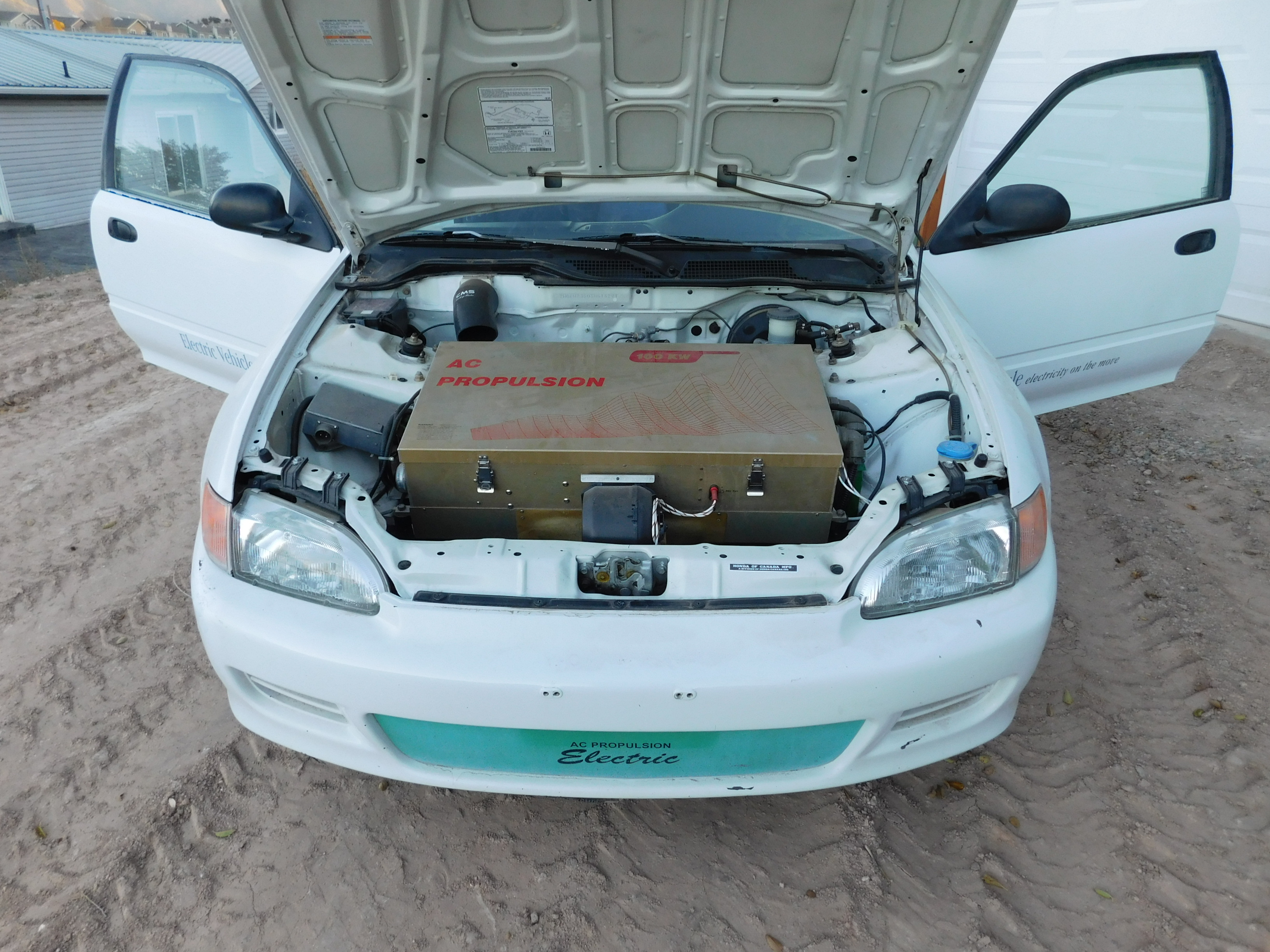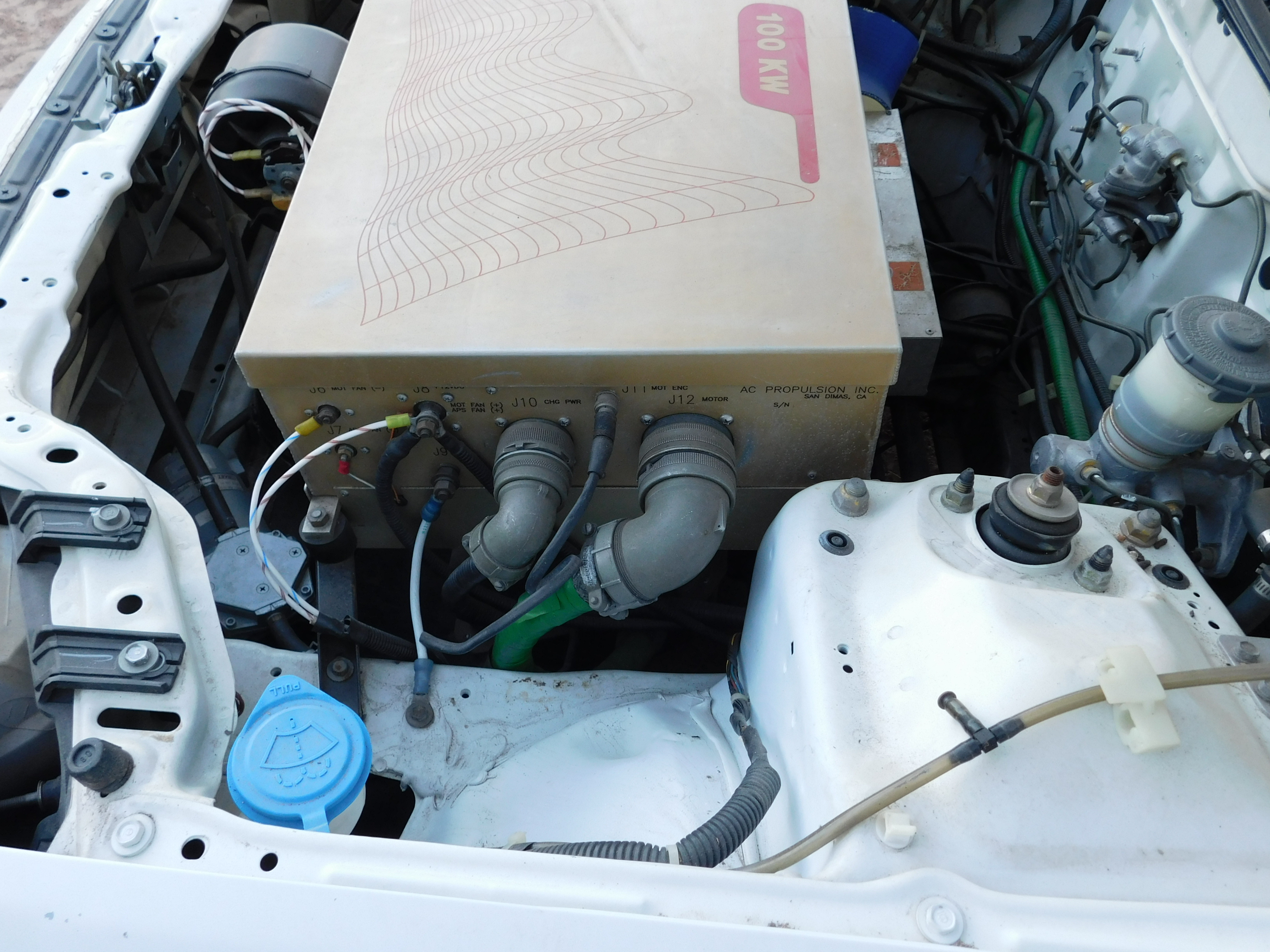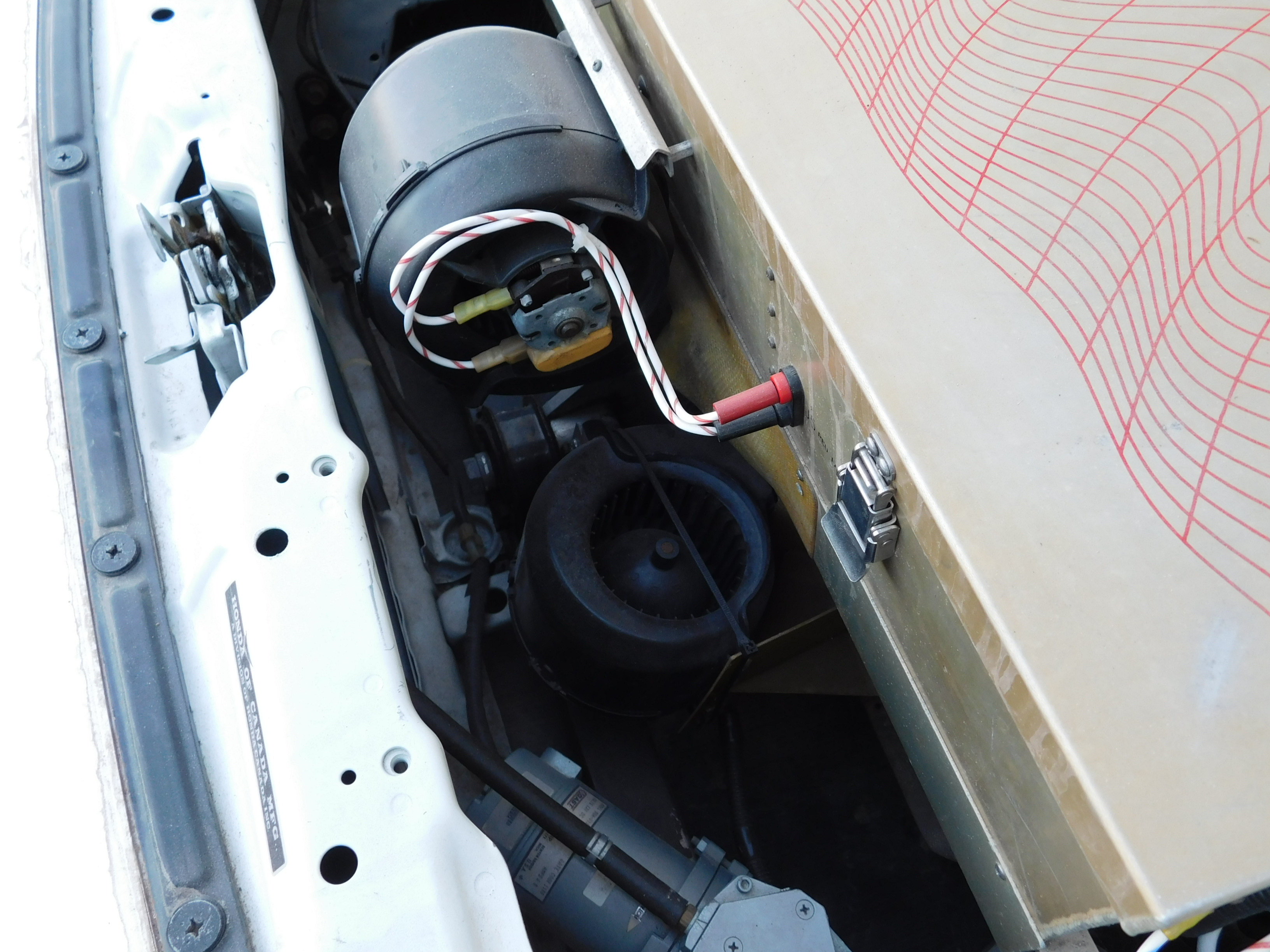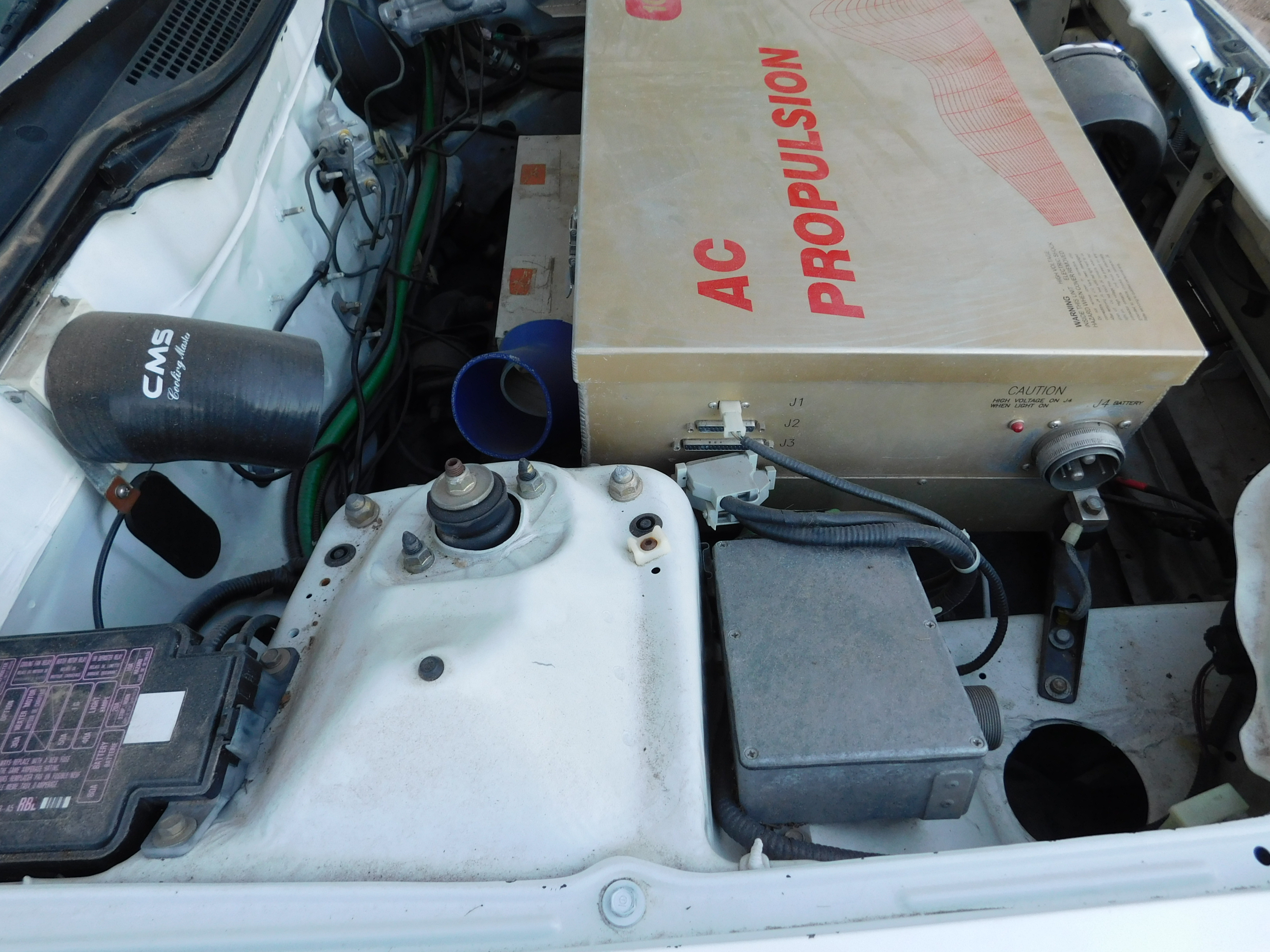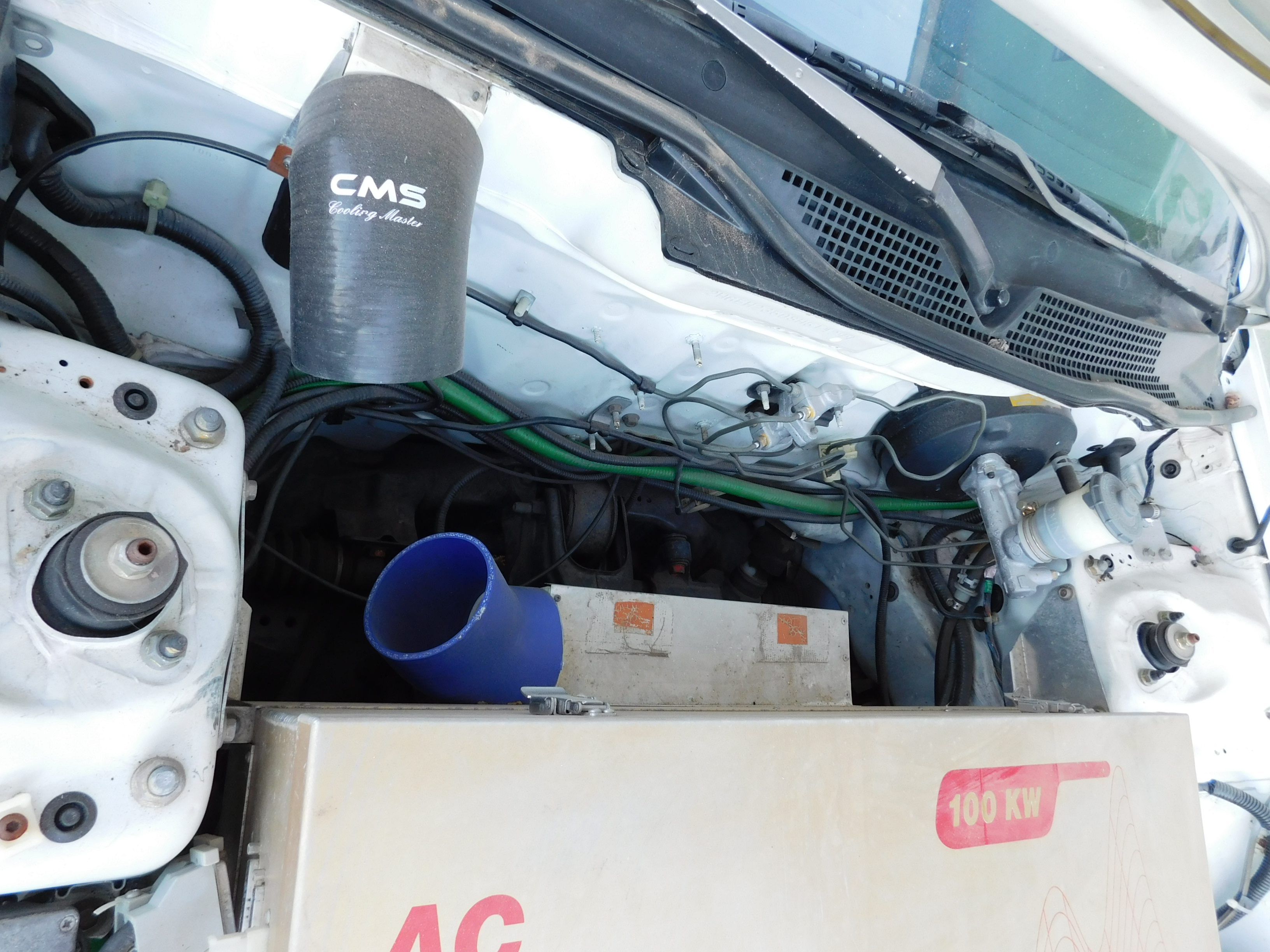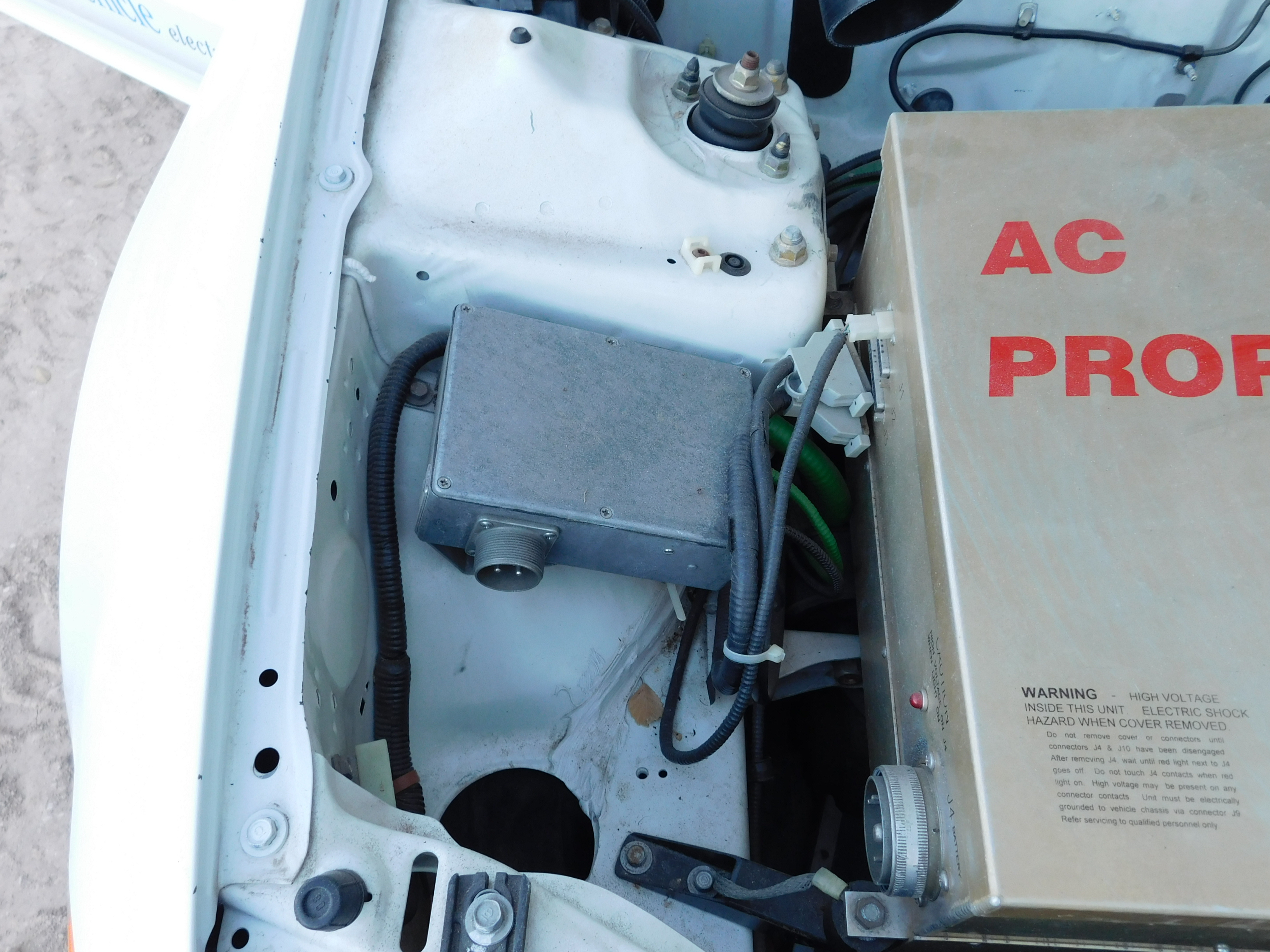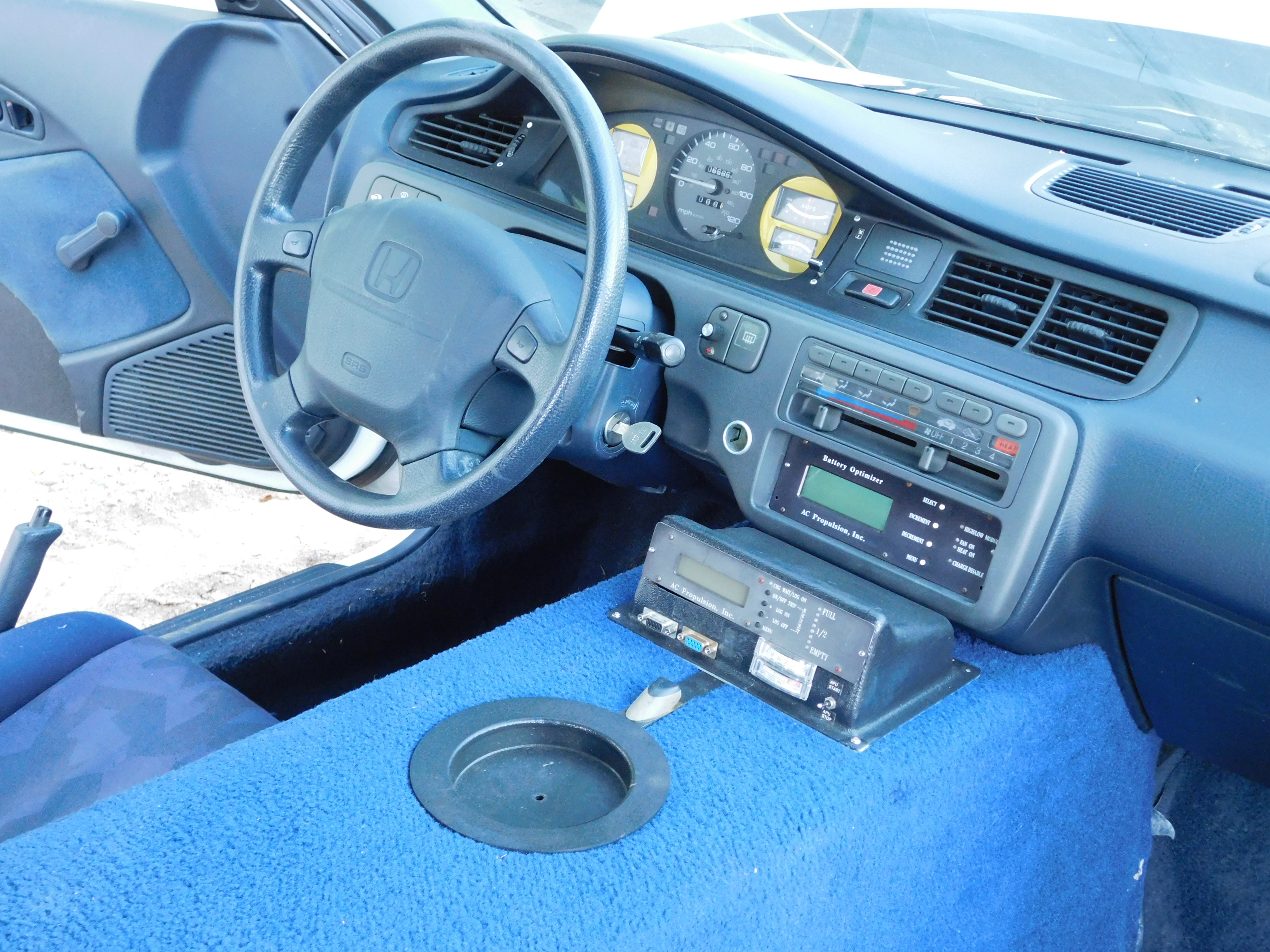
1995 ACPropulsion eCivic Prototype EV
" ACP eCivic "
---> Electric Vehicle <---
===
Vehicle Description
Designed by AC Propulsion & Alan Cocconi
Honda Civic
We acquired our A. C. Propulsion e-Civic in May of 2012. The
original ownership was held by Southern California Edison
who acquired the vehicle from ACP as one of their proof-of-concept
test platforms. After SCE the chassis was purchased by an
Optima Battery Company engineer who owned the vehicle for 12
years. Beyond acknowledging that the Honda numbers indicate a
model year of 1995, we do not know what actual year
ACP converted the vehicle.
As pictured below, you might note our eCivic has some dents and
dings as we have not added it to the project list for restoration
yet, but its day is coming. We acquired the vehicle as
we found the early ACP concept and engineering too absolutely
delightful to pass up. Alan Cocconi was truly years ahead-of-his-time
when he founded ACP.
Battery configuration: 28 series connected Optima deep cycle
(Yellow Top) batteries D750S. 52 Ah (C/2), 280 W/kg, sealed,
maintenance free, ‘Gates’ spiral cell, 1200 lb., actual pack
voltage ~ 360 V, pack capacity ~ 16 kWh. The battery
pack controls are upgraded battery management system (ACP
BatOp) featuring higher voltage balancing. There are two battery
management computers on-board, both have the ability to
download serial data to a PC. The batteries are located in a center
tunnel configuration, much like the GM Impact prototype which
Cocconi helped develop for Aeroenvironment in 1989.
The Drive Train: pure electric 133 HP (100 kW) AC induction motor
with integrated on-board charger (110 V or 220 V, standard wall plugs),
flat power profile, single gear (no shifting), 165 ft/lb torque
(accel.), 105 ft/lb torque (adjustable regen. braking).
Performance: 0 - 60 in 10 seconds; top speed 80 mph;
70 - 90 miles range with new pack (70% highway); fast
charge < 1 hour with 220 V, 80A conductive outlet.
Other Features: Cruise control, traction control, adjustable regen
(full glide to full regen), 2 kW ceramic heater (for defrost
and cabin heat).
We acquired a few other items with the eCivic, including: a 12A
load to discharge system, a winch for raising and lowering the traction
pack, communications cable extender (for testing pack prior
to installation), 4 spare Batops (individual battery monitoring units),
and three different versions of the battery
charging software (IC chips).
--- Pictures below ---



